Fablogiapresent
1 like920 views
Ш§Щ„ШҜШұЩҲЩҠЩҶЩҲ ЩҮЩҲ Щ…ЩҶШөЩ‘Ш© Щ…ЩҒШӘЩҲШӯШ© Ш§Щ„Щ…ШөШҜШұ ШӘШіШӘШ®ШҜЩ… ЩҒЩҠ ШӘШөЩ…ЩҠЩ… ЩҲШӘШ·ЩҲЩҠШұ Щ„ЩҲШӯШ§ШӘ ШҜЩҲШ§ШҰШұ ШҘЩ„ЩғШӘШұЩҲЩҶЩҠШ© Щ„Щ…ШҙШ§ШұЩҠШ№ Щ…ШӘЩҶЩҲШ№Ш©ШҢ Щ…Ш«Щ„ Ш§Щ„Ш·ШЁШ§Ш№Ш© Ш«Щ„Ш§Ш«ЩҠШ© Ш§Щ„ШЈШЁШ№Ш§ШҜ ЩҲШ§Щ„ШұЩҲШЁЩҲШӘШ§ШӘ. ЩҠШ¬Щ…Ш№ Ш§Щ„ШҜШұЩҲЩҠЩҶЩҲ ШЁЩҠЩҶ Щ…Ш¬ШӘЩ…Ш№Ш§ШӘ ШҘШЁШҜШ§Ш№ЩҠШ© Щ„ШӘШ·ШЁЩҠЩӮ Ш§Щ„ЩҒШ§ШЁЩҲЩ„ЩҲШ¬ЩҠШ§ ЩҲШ§Щ„Щ…ШҙШ§ШұЩҠШ№ Ш§Щ„ЩҮЩҶШҜШіЩҠШ©ШҢ Щ…Щ…Ш§ ЩҠШ№ШІШІ Ш§Щ„ШӘЩҒШ§Ш№Щ„ ШЁЩҠЩҶ Ш§Щ„ШЈШ№Ш¶Ш§ШЎ Щ…ЩҶ Ш®Щ„Ш§Щ„ ЩҲШұШҙ Ш§Щ„Ш№Щ…Щ„ ЩҲШ§Щ„Щ…Ш¬Щ…ЩҲШ№Ш§ШӘ Ш№Щ„Щү Ш§Щ„ШҘЩҶШӘШұЩҶШӘ. ЩҠЩ…ЩғЩҶ Ш§ШіШӘШ®ШҜШ§Щ… Ш§Щ„ШҜШұЩҲЩҠЩҶЩҲ ЩҒЩҠ Щ…Ш¬Щ…ЩҲШ№Ш© ЩҲШ§ШіШ№Ш© Щ…ЩҶ Ш§Щ„ШӘШ·ШЁЩҠЩӮШ§ШӘ Ш§Щ„ШӘЩӮЩҶЩҠШ© Щ…Ш«Щ„ Ш§Щ„ШӘШӯЩғЩ… ЩҒЩҠ Ш§Щ„ШЈШ¬ЩҮШІШ© Ш§Щ„Ш°ЩғЩҠШ© ЩҲШ§Щ„Щ…ШҙШ§ШұЩҠШ№ Ш§Щ„ШҘЩ„ЩғШӘШұЩҲЩҶЩҠШ© Ш§Щ„Щ…ШӘЩӮШҜЩ…Ш©.
1 of 56
Downloaded 44 times

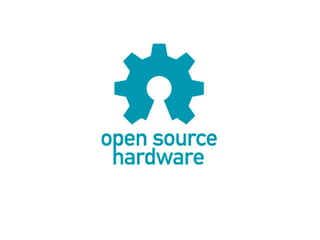
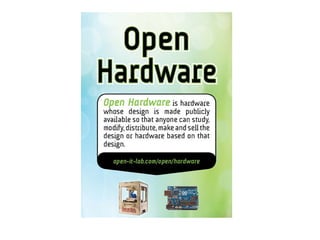

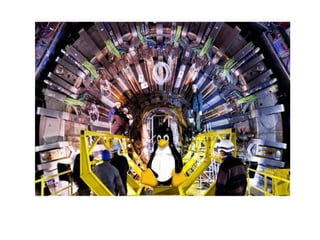
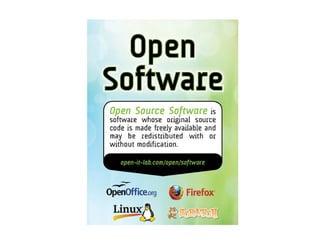
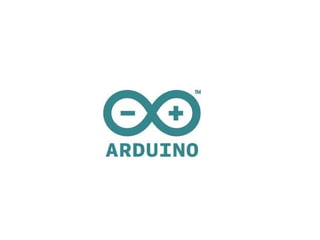
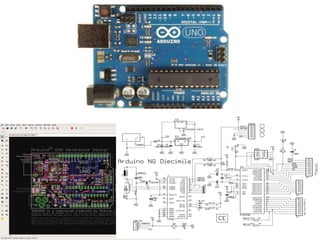
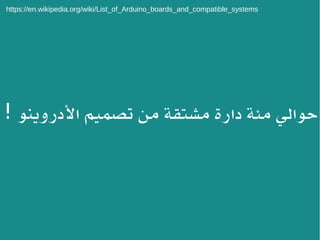
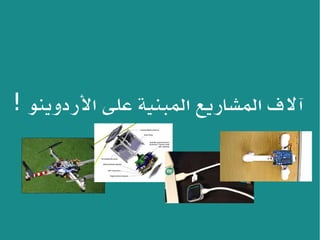
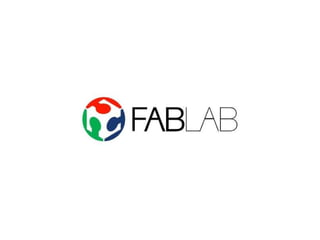


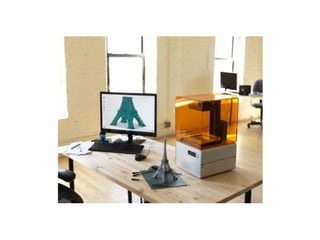
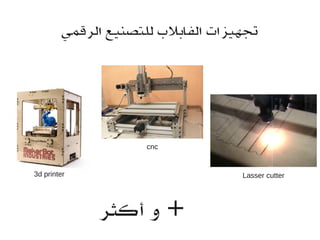





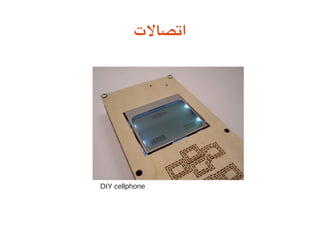
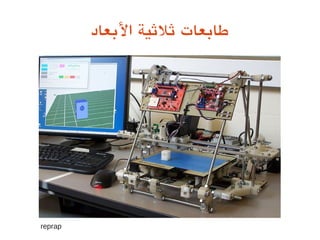
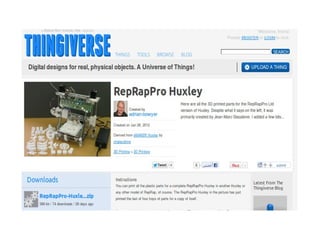

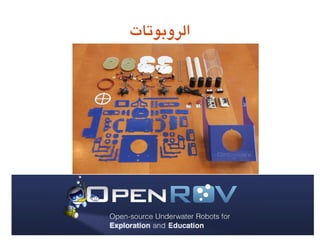
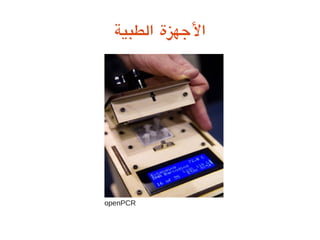
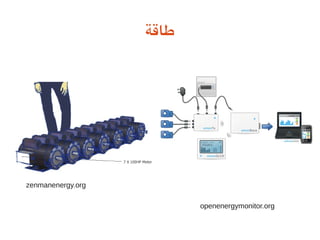
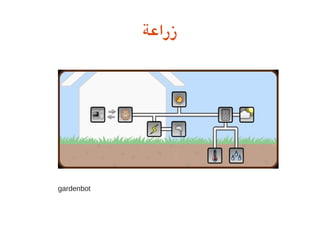
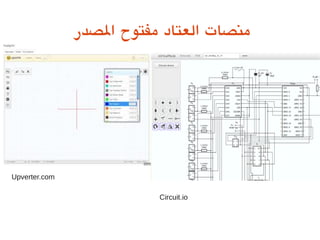

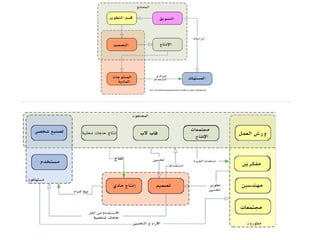
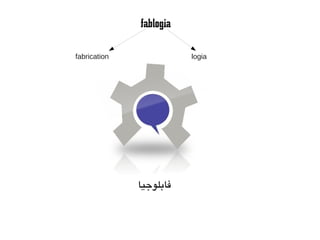
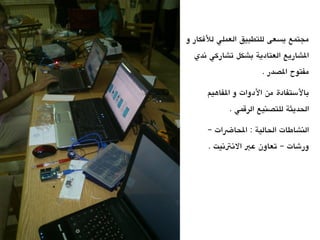
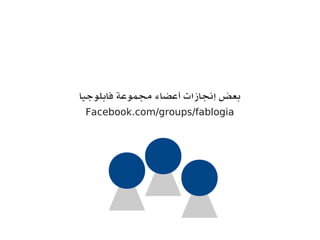

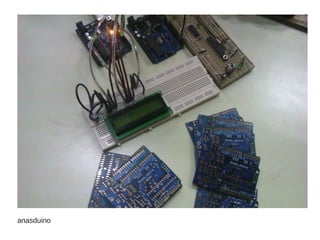
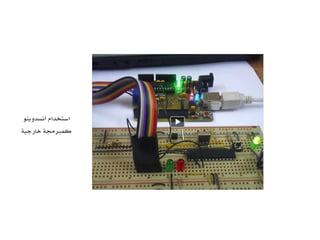
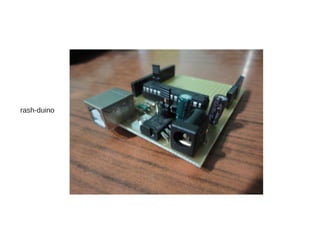


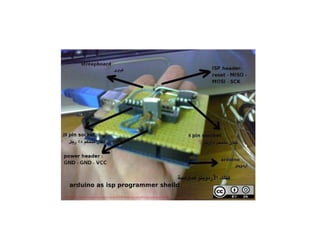
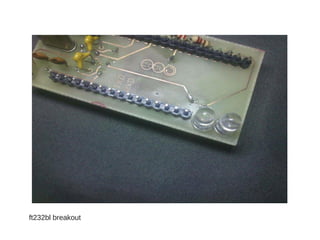

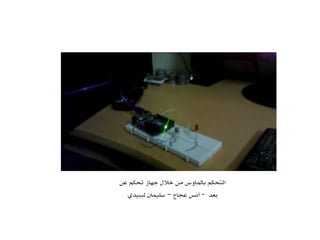


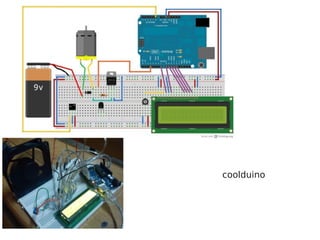

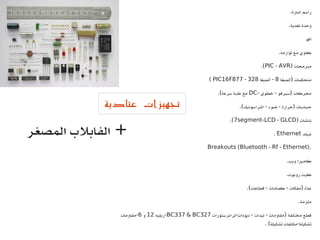
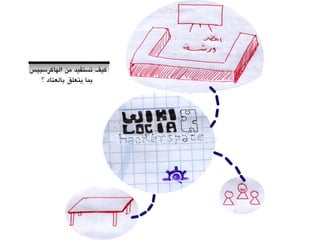
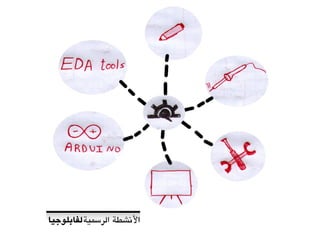
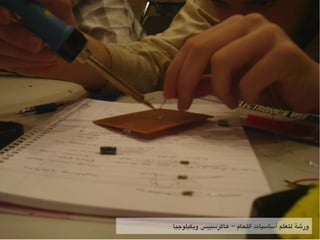
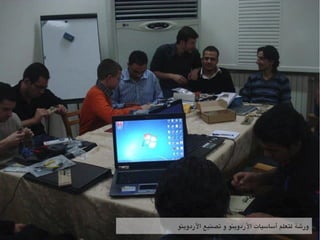
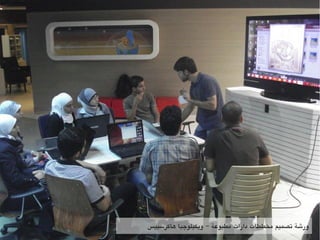

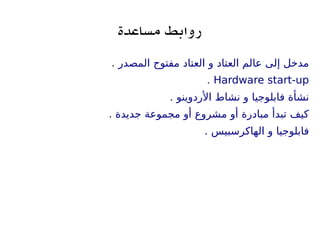
Ad
Recommended
Hardware startup v3
Hardware startup v3yahya tawil
Мэ
ШӘШӘЩҶШ§ЩҲЩ„ Ш§Щ„ЩҲШ«ЩҠЩӮШ© Щ…ЩҲШ¶ЩҲШ№ Ш§Щ„ШұЩҠШ§ШҜШ© ЩҲШ§Щ„Щ…ШҙШ§ШұЩҠШ№ Ш§Щ„ЩҶШ§ШҙШҰШ© Ш§Щ„Ш№ШӘШ§ШҜЩҠШ©ШҢ Щ…ЩҲШ¬ЩҮШ© ЩҶШӯЩҲ Ш®Ш·ЩҲШ§ШӘ Ш§Щ„ШӘШөЩ…ЩҠЩ… ЩҲШ§Щ„ШӘШөЩҶЩҠШ№ Щ…ЩҶ Ш§Щ„ЩҒЩғШұШ© ШҘЩ„Щү Ш§Щ„Щ…ЩҶШӘШ¬. ШӘЩӮШҜЩ… Ш§Щ„ЩҲШ«ЩҠЩӮШ© ШҘШұШҙШ§ШҜШ§ШӘ ШӯЩҲЩ„ ЩғЩҠЩҒЩҠШ© Щ…Ш№Ш§Щ„Ш¬Ш© Ш§Щ„Щ…ШҙШ§ЩғЩ„ Ш§Щ„ЩҲШ§ЩӮШ№ЩҠШ© Ш№ШЁШұ Ш§Щ„Ш§ШЁШӘЩғШ§ШұШҢ ЩҲШӘШӯШӘЩҲЩҠ Ш№Щ„Щү ШЈЩ…Ш«Щ„Ш© Щ…Щ„ЩҮЩ…Ш© Щ„Щ…ШҙШ§ШұЩҠШ№ ЩҶШ§Ш¬ШӯШ©. ЩғЩ…Ш§ ШӘШӨЩғШҜ Ш№Щ„Щү ШЈЩҮЩ…ЩҠШ© ЩҒЩҮЩ… Ш§ШӯШӘЩҠШ§Ш¬Ш§ШӘ Ш§Щ„ШіЩҲЩӮ ЩҲШӘШ¬Щ…ЩҠШ№ Ш§Щ„Щ…Ш№Щ„ЩҲЩ…Ш§ШӘ Щ…ЩҶ Ш§Щ„Щ…ШіШӘШ®ШҜЩ…ЩҠЩҶ ЩӮШЁЩ„ ШҘШ·Щ„Ш§ЩӮ Ш§Щ„Щ…ЩҶШӘШ¬.Arduino Ш§ШұШҜЩҲЩҠЩҶЩҲ
Arduino Ш§ШұШҜЩҲЩҠЩҶЩҲsalih mahmod
Мэ
Arduino is an open-source prototyping platform that uses easy-to-use hardware and software to read inputs and produce outputs. Users program Arduino boards using the Arduino programming language and interface (IDE), downloading software, connecting the board, and uploading code. The document outlines the development process, programming language, functions, and examples for both digital and analog input/output operations.Waht is Arduino
Waht is ArduinoWail Skanderi
Мэ
ЩҠЩӮШҜЩ… Ш§Щ„Щ…ШіШӘЩҶШҜ Щ…ЩӮШҜЩ…Ш© ШӯЩҲЩ„ Ш§Щ„ШЈЩ„ЩҲШ§Шӯ Ш§Щ„ШҘЩ„ЩғШӘШұЩҲЩҶЩҠШ© ШЈЩҲШұШҜЩҲЩҠЩҶЩҲШҢ Щ…ЩҲШ¶ШӯЩӢШ§ ШіЩҮЩҲЩ„Ш© Ш§ШіШӘШ®ШҜШ§Щ…ЩҮШ§ ЩҒЩҠ Ш§Щ„Щ…ШҙШ§ШұЩҠШ№ Ш§Щ„Щ…Ш®ШӘЩ„ЩҒШ© Щ…ЩҶШ° Ш№Ш§Щ… 2005. ЩҠШӘЩҶШ§ЩҲЩ„ Ш§Щ„ШЈЩҶЩҲШ§Ш№ Ш§Щ„Щ…Ш®ШӘЩ„ЩҒШ© Щ„ЩҮШ°ЩҮ Ш§Щ„ШЈЩ„ЩҲШ§Шӯ Щ…Ш«Щ„ ШЈЩҲШұШҜЩҲЩҠЩҶЩҲ ШЈЩҲЩҶЩҲ ЩҲЩ…ЩҠШәШ§ ЩҲЩ…ЩҠЩғШұЩҲШҢ ЩҲЩҠШҙШұШӯ Щ…Щ…ЩҠШІШ§ШӘЩҮШ§ ЩҲЩғЩҠЩҒЩҠШ© Ш§Щ„ШӘЩҒШ§Ш№Щ„ Щ…Ш№ЩҮШ§ Ш№ШЁШұ Ш§Щ„ШЁШұЩ…Ш¬Ш©. ЩҠЩҸШҙШ¬Ш№ Ш§Щ„Щ…ШЁШӘШҜШҰЩҠЩҶ Ш№Щ„Щү Ш§Щ„Ш§ШіШӘЩҒШ§ШҜШ© Щ…ЩҶ ЩҮШ°ЩҮ Ш§Щ„ШӘЩғЩҶЩҲЩ„ЩҲШ¬ЩҠШ§ Щ„ШӘЩҶЩҒЩҠШ° Щ…ШҙШ§ШұЩҠШ№ ШҘШЁШҜШ§Ш№ЩҠШ© Щ…Ш«Щ„ Ш§Щ„ШӘШӯЩғЩ… ШЁШ§Щ„ШЈШ¶ЩҲШ§ШЎ Ш№ШЁШұ ШЁШұЩ…Ш¬Ш© ШЁШіЩҠШ·Ш©.Oh intro
Oh introyahya tawil
Мэ
ШӘШӘЩҶШ§ЩҲЩ„ Ш§Щ„ЩҲШ«ЩҠЩӮШ© ШҜЩ„ЩҠЩ„ Ш§Щ„Щ…ШіШӘШ®ШҜЩ… Щ„Щ„ЩҲШӯШ© Ш§Щ„ШЈЩ… Apple IIШҢ ШЁЩ…Ш§ ЩҒЩҠ Ш°Щ„Щғ Ш§Щ„Щ…Ш®Ш·Ш·Ш§ШӘ Ш§Щ„ШҜШ§Ш®Щ„ЩҠШ© ЩҲШ·ШұЩӮ Ш§Щ„ШҘШөЩ„Ш§ШӯШҢ ШЁШ§Щ„ШҘШ¶Ш§ЩҒШ© ШҘЩ„Щү ШӘЩӮШҜЩҠЩ… Щ…Ш№Щ„ЩҲЩ…Ш§ШӘ ШӯЩҲЩ„ Ш§Щ„Ш№ШӘШ§ШҜ Ш§Щ„Щ…ЩҒШӘЩҲШӯ ЩҲШӘШ·ЩҲЩҠШұЩҮ. ЩғЩ…Ш§ ШӘШіШӘШ№ШұШ¶ Ш§Щ„ШӘШӯШҜЩҠШ§ШӘ Ш§Щ„Щ…ШӘШ№Щ„ЩӮШ© ШЁШ§Щ„ШұШ®Шө ЩҲШ§Щ„ЩӮЩҲШ§ЩҶЩҠЩҶШҢ ЩҲШӘШіЩ„Ш· Ш§Щ„Ш¶ЩҲШЎ Ш№Щ„Щү ШЈЩҮЩ…ЩҠШ© Ш§Щ„ШӘШ№Ш§ЩҲЩҶ ЩҒЩҠ Ш§Щ„Щ…Ш¬ШӘЩ…Ш№ Ш§Щ„Щ…ЩҒШӘЩҲШӯ Ш§Щ„Щ…ШөШҜШұ. ШӘШҙЩ…Щ„ Ш§Щ„ЩҲШ«ЩҠЩӮШ© ШЈЩҠШ¶ЩӢШ§ ШӘШ¬Ш§ШұШЁ ЩҲЩ…ШҙШ§ШұЩҠШ№ Ш№Щ…Щ„ЩҠШ© ШӘШӘШ№Щ„ЩӮ ШЁШ§Щ„Ш№ШӘШ§ШҜ Ш§Щ„Щ…ЩҒШӘЩҲШӯ Щ…Ш«Щ„ Ш§ШіШӘШ®ШҜШ§Щ… Arduino ЩҲШӘШөЩҶЩҠШ№ Ш§Щ„ШӯЩҲШ§ШіЩҠШЁ Ш§Щ„ШҙШ®ШөЩҠШ©.ШЁШұЩ…Ш¬Ш© Ш§Щ„ШЈШұШҜЩҲЩҠЩҶЩҲ Щ„Щ„ЩҠШ§ЩҒШ№ЩҠЩҶ
ШЁШұЩ…Ш¬Ш© Ш§Щ„ШЈШұШҜЩҲЩҠЩҶЩҲ Щ„Щ„ЩҠШ§ЩҒШ№ЩҠЩҶWikilogia
Мэ
ЩҠШӘЩҶШ§ЩҲЩ„ Ш§Щ„ЩҲШ«ЩҠЩӮШ© ШЁШұЩҶШ§Щ…Ш¬ Ш§Щ„ШӘШӯЩғЩ… ЩҒЩҠ Ш§Щ„ШҘШ¶Ш§ШЎШ© ШЁШ§ШіШӘШ®ШҜШ§Щ… Ш§Щ„ШЈШұШҜЩҲЩҠЩҶЩҲШҢ ШӯЩҠШ« ЩҠЩҲШ¶Шӯ ЩғЩҠЩҒЩҠШ© ШӘШ№ШҜЩҠЩ„ ШҙШҜШ© Ш§Щ„Ш¶ЩҲШЎ Ш№ЩҶ Ш·ШұЩҠЩӮ Ш§ШіШӘШ®ШҜШ§Щ… Щ…ШӘШәЩҠШұШ§ШӘ Щ…Ш®ШӘЩ„ЩҒШ©. ЩғЩ…Ш§ ЩҠШҙШұШӯ ШЁШ§Щ„ШӘЩҒШөЩҠЩ„ ЩғЩҠЩҒЩҠШ© ЩӮШұШ§ШЎШ© Ш§Щ„ШЁЩҠШ§ЩҶШ§ШӘ Щ…ЩҶ Ш§Щ„ШӯШіШ§ШіШ§ШӘ ЩҲШ§Щ„ШӘШ№Ш§Щ…Щ„ Щ…Ш№ЩҮШ§ Щ„ШӘШұШ¬Щ…Ш© ШҘШҙШ§ШұШ§ШӘ Ш§Щ„Ш¶ЩҲШЎ ШҘЩ„Щү ШЈЩҲШ§Щ…Шұ ШӘШҙШәЩҠЩ„ ЩҲШҘЩҠЩӮШ§ЩҒ. ЩҠШӘШ¶Щ…ЩҶ Ш§Щ„ШЁШұЩҶШ§Щ…Ш¬ Ш§ШіШӘШ®ШҜШ§Щ… Ш§Щ„ШҙШұЩҲШ· Щ„ШӘШӯШҜЩҠШҜ Ш§Щ„ШӯШ§Щ„Ш© Ш§Щ„ШӯШ§Щ„ЩҠШ© Щ„Щ„ШҜШ§ШҰШұШ© Ш§Щ„ЩғЩҮШұШЁШ§ШҰЩҠШ© ЩҲШӘШ№ШҜЩҠЩ„ ШҙШҜШ© Ш§Щ„ШҘШ¶Ш§ШЎШ© ШӘШЁШ№ЩӢШ§ Щ„Ш°Щ„Щғ.Oh intro v2
Oh intro v2yahya tawil
Мэ
ШӘШӘЩҶШ§ЩҲЩ„ Ш§Щ„ЩҲШ«ЩҠЩӮШ© Щ…ЩҒЩҮЩҲЩ… Ш§Щ„Ш№ШӘШ§ШҜ Ш§Щ„Щ…ЩҒШӘЩҲШӯ Ш§Щ„Щ…ШөШҜШұ ЩҲЩғЩҠЩҒ ШЈЩҶЩҮ Щ…ШҙШ§ШЁЩҮ Щ„ШӘШ¬ШұШЁШ© Ш§Щ„ШЁШұЩ…Ш¬ЩҠШ§ШӘ Щ…ЩҒШӘЩҲШӯШ© Ш§Щ„Щ…ШөШҜШұШҢ ШӯЩҠШ« ЩҠШӘЩ… ШӘШЁШ§ШҜЩ„ Ш§Щ„Щ…Ш№ШұЩҒШ© ЩҲШ§Щ„ШӘШ№Ш§ЩҲЩҶ ШЁЩҠЩҶ Ш§Щ„Щ…ШөЩ…Щ…ЩҠЩҶ. ШӘШіЩ„Ш· Ш§Щ„Ш¶ЩҲШЎ Ш№Щ„Щү ШЈЩҮЩ…ЩҠШ© ШұШіЩҲЩ… Ш§Щ„ШӘШөЩ…ЩҠЩ… ЩҲШ§Щ„Щ…Ш®Ш·Ш·Ш§ШӘ ЩҲШ§Щ„Ш№ШӘШ§ШҜ ЩҒЩҠ ЩҮШ°Ш§ Ш§Щ„Щ…Ш¬Ш§Щ„ШҢ ЩҒШ¶Щ„Ш§ЩӢ Ш№ЩҶ Ш§Щ„ЩҶЩ…ЩҲШ°Ш¬ Ш§Щ„ШӘШ¬Ш§ШұЩҠ Щ„ШҙШұЩғШ© ШЈШұШҜЩҲЩҠЩҶЩҲ ЩҲЩ…ЩғШ§ЩҶШӘЩҮШ§ ЩҒЩҠ Ш§Щ„ШіЩҲЩӮ. ЩғЩ…Ш§ ШӘШҙЩҠШұ ШҘЩ„Щү Ш§Щ„ШЈЩ…Ш«Щ„Ш© ЩҲШ§Щ„Щ…ЩҲШ§ШұШҜ Ш§Щ„Щ…ШӘШ§ШӯШ© Щ„Щ„ШҜШұШ§ШіШ© ЩҲШ§Щ„ШӘЩҒШ§Ш№Щ„ Щ…Ш№ Щ…Ш¬ШӘЩ…Ш№ Ш§Щ„Ш№ШӘШ§ШҜ Ш§Щ„Щ…ЩҒШӘЩҲШӯ.Hardware startup
Hardware startup yahya tawil
Мэ
Ш§Щ„Ш№ШӘШ§ШҜЩҠШ© Ш§Щ„ЩҶШ§ШҙШҰШ© ЩҲШ§Щ„Щ…ШҙШ§ШұЩҠШ№ ЩҲШ§Щ„ШұЩҠШ§ШҜШ© ШӘШұЩғШІ Ш№Щ„Щү Ш§Щ„ШӯЩ„ЩҲЩ„ Щ„Щ„Щ…ШҙШ§ЩғЩ„ Ш§Щ„ЩҲШ§ЩӮШ№ЩҠШ© Ш§Щ„ШӘЩҠ ШӘШ№Ш§ЩҶЩҠ Щ…ЩҶЩҮШ§ Ш§Щ„Щ…Ш¬ШӘЩ…Ш№Ш§ШӘШҢ Щ…Ш«Щ„ Ш§Щ„ШӘЩҲШ§ШөЩ„ ЩҲШ§Щ„Щ…ЩҠШ§ЩҮ ЩҲШ§Щ„ШіЩғЩҶ. ЩғЩ…Ш§ ШӘШіЩ„Ш· Ш§Щ„Ш¶ЩҲШЎ Ш№Щ„Щү ШЈЩҮЩ…ЩҠШ© Ш§Щ„Ш§ШЁШӘЩғШ§Шұ ЩҲШ§Щ„ШӘЩғЩҶЩҲЩ„ЩҲШ¬ЩҠШ§ Ш§Щ„Щ…ЩҒШӘЩҲШӯШ© Щ…Ш«Щ„ ШЈШұШҜЩҲЩҠЩҶЩҲ ЩҒЩҠ ШӘШ№ШІЩҠШІ ШұЩҠШ§ШҜШ© Ш§Щ„ШЈШ№Щ…Ш§Щ„. ШӘШҙШ¬Ш№ Ш§Щ„ЩҲШ«ЩҠЩӮШ© Ш№Щ„Щү Ш§Щ„ШЁШӯШ« Ш№ЩҶ ШЈЩҒЩғШ§Шұ Ш¬ШҜЩҠШҜШ© ЩҲШ§Щ„Щ…ШҙШ§ШұЩғШ© ЩҒЩҠ Ш§Щ„Щ…ШҙШ§ШұЩҠШ№ Ш§Щ„ЩҶШ§ШҙШҰШ© Щ„ШӘШ·ЩҲЩҠШұ ШӯЩ„ЩҲЩ„ ЩҒШ№Ш§Щ„Ш© Щ„Щ„Щ…ШҙШ§ЩғЩ„ Ш§Щ„Щ…Ш№ЩӮШҜШ©.ШЁШұЩ…Ш¬Ш© Ш§Щ„ШЈШұШҜЩҲЩҠЩҶЩҲ - Ш§Щ„ЩҠЩҲЩ… Ш§Щ„Ш«Ш§Щ„Ш«.
ШЁШұЩ…Ш¬Ш© Ш§Щ„ШЈШұШҜЩҲЩҠЩҶЩҲ - Ш§Щ„ЩҠЩҲЩ… Ш§Щ„Ш«Ш§Щ„Ш«. Ahmed Sakr
Мэ
arduino programming, in arabic.ШЁШұЩ…Ш¬Ш© Ш§Щ„ШЈШұШҜЩҲЩҠЩҶЩҲ - Ш§Щ„ЩҠЩҲЩ… Ш§Щ„Ш«Ш§ЩҶЩҠ
ШЁШұЩ…Ш¬Ш© Ш§Щ„ШЈШұШҜЩҲЩҠЩҶЩҲ - Ш§Щ„ЩҠЩҲЩ… Ш§Щ„Ш«Ш§ЩҶЩҠAhmed Sakr
Мэ
This document discusses basic concepts of Arduino including data types used like integer, character, long, float, and boolean. It also mentions common electronic components that can be controlled by Arduino like DC motor, stepper motor, and servo motor. The code sample shows how to blink LEDs connected to pins 2, 4, and 7 of the Arduino board by using setup() and loop() functions along with digitalWrite() and delay() to turn the LEDs on and off sequentially in red, yellow, and green colors.Ш§Щ„ШӘШ№Ш§Щ…Щ„ Щ…Ш№ ШЁЩҠШҰШ© ШЁШұЩ…Ш¬Ш© ШЈШұШҜЩҲЩҠЩҶЩҲ
Ш§Щ„ШӘШ№Ш§Щ…Щ„ Щ…Ш№ ШЁЩҠШҰШ© ШЁШұЩ…Ш¬Ш© ШЈШұШҜЩҲЩҠЩҶЩҲWikilogia
Мэ
ШӘШӘЩҶШ§ЩҲЩ„ Ш§Щ„ЩҲШ«ЩҠЩӮШ© Щ…ШҙШұЩҲШ№ Ш§ШіШӘШ®ШҜШ§Щ… Ш§Щ„ШЈШұШҜЩҲЩҠЩҶЩҲ Щ„Щ„ШӘШӯЩғЩ… ЩҒЩҠ ШҘШҙШ§ШұШ© Ш§Щ„Щ…ШұЩҲШұ Ш№ШЁШұ ШӘШҙШәЩҠЩ„ ЩҲШҘШ·ЩҒШ§ШЎ LED ШЁШ§ШіШӘШ®ШҜШ§Щ… ЩғЩҲШҜ Ш§Щ„ШЁШұЩ…Ш¬Ш©. ЩҠШӘЩ… ШЈЩҠШ¶ЩӢШ§ Щ…ЩҶШ§ЩӮШҙШ© ЩғЩҠЩҒЩҠШ© ЩӮШұШ§ШЎШ© ШҙШҜШ© Ш§Щ„ШҘШ¶Ш§ШЎШ© ШЁШ§ШіШӘШ®ШҜШ§Щ… ШӯШіШ§Ші Ш§Щ„Ш¶ЩҲШЎ. ЩғЩ…Ш§ ШӘШӯШӘЩҲЩҠ Ш§Щ„ЩҲШ«ЩҠЩӮШ© Ш№Щ„Щү ШұЩҲШ§ШЁШ· Щ„ШӯШіШ§ШЁШ§ШӘ Ш§Щ„ЩҒЩҠШіШЁЩҲЩғ Ш°Ш§ШӘ Ш§Щ„ШөЩ„Ш©.ШЈШіШ§ШіЩҠШ§ШӘ Ш§Щ„ШӯШіШ§ШіШ§ШӘ ЩҲШ§Щ„ШҘШҙШ§ШұШ© Ш§Щ„ШӘЩ…Ш§Ш«Щ„ЩҠШ© ЩҒЩҠ Ш§Щ„ШЈШұШҜЩҲЩҠЩҶЩҲ Щ„Щ„ЩҠШ§ЩҒШ№ЩҠЩҶ
ШЈШіШ§ШіЩҠШ§ШӘ Ш§Щ„ШӯШіШ§ШіШ§ШӘ ЩҲШ§Щ„ШҘШҙШ§ШұШ© Ш§Щ„ШӘЩ…Ш§Ш«Щ„ЩҠШ© ЩҒЩҠ Ш§Щ„ШЈШұШҜЩҲЩҠЩҶЩҲ Щ„Щ„ЩҠШ§ЩҒШ№ЩҠЩҶWikilogia
Мэ
ЩҠШҙШұШӯ Ш§Щ„ЩҲШ«ЩҠЩӮШ© ЩғЩҠЩҒЩҠШ© Ш§Щ„ШӘШӯЩғЩ… ЩҒЩҠ ШҙШҜШ© ШҘШ¶Ш§ШЎШ© Щ„ЩҠШҜ ШЁШ§ШіШӘШ®ШҜШ§Щ… ШЁШұЩҶШ§Щ…Ш¬ Ш®Ш§Шө ШЁШ§ШұШҜЩҲЩҠЩҶЩҲШҢ ШӯЩҠШ« ЩҠШӘЩ… ШҘЩҶШҙШ§ШЎ Щ…ШӘШәЩҠШұШ§ШӘ Щ„ШІЩҠШ§ШҜШ© ШЈЩҲ ЩҶЩӮШөШ§ЩҶ Ш§Щ„ШҙШҜШ© ШӘШҜШұЩҠШ¬ЩҠШ§ЩӢ ШЁЩҠЩҶ 0 ЩҲ255. ЩҠШӘШ¶Щ…ЩҶ Ш§Щ„ШЁШұЩҶШ§Щ…Ш¬ ШӘЩҲШөЩҠЩ„ ШҜШұШ¬Ш§ШӘ Ш§Щ„ШӯШұШ§ШұШ© ЩҲШ§Щ„Ш§ШіШӘШ¬Ш§ШЁШ© Щ„Щ„ШЈШ¶ЩҲШ§ШЎ ШӯШіШЁ ШӯШіШ§ШіЩҠШӘЩҮШ§ШҢ Щ…Щ…Ш§ ЩҠЩҲЩҒШұ ШӘШӯЩғЩ…ЩӢШ§ ШҜЩӮЩҠЩӮЩӢШ§ ЩҒЩҠ Ш§Щ„ШҘЩҶШ§ШұШ©. ЩғЩ…Ш§ ЩҠШ№Ш·ЩҠ ШЈЩ…Ш«Щ„Ш© Ш№Щ„Щү Ш§Щ„ШЈЩғЩҲШ§ШҜ Ш§Щ„Щ„Ш§ШІЩ…Ш© Щ„ШЁШұЩ…Ш¬Ш© Ш§Щ„ШҘШ¶Ш§ШЎШ© ШЁШ·ШұЩҠЩӮШ© ЩҒШ№Ш§Щ„Ш©.ШҜШұШі ШЈЩҶЩҲШ§Ш№ ШЈШ¬ЩҮШІШ© Ш§Щ„ШӯШ§ШіШЁ Ш§Щ„ШўЩ„ЩҠ ШЈЩҲЩ„ Щ…ШӘЩҲШіШ·
ШҜШұШі ШЈЩҶЩҲШ§Ш№ ШЈШ¬ЩҮШІШ© Ш§Щ„ШӯШ§ШіШЁ Ш§Щ„ШўЩ„ЩҠ ШЈЩҲЩ„ Щ…ШӘЩҲШіШ·MAJEED3691
Мэ
ШӘШӘЩҶШ§ЩҲЩ„ Ш§Щ„ЩҲШ«ЩҠЩӮШ© ШЈЩҶЩҲШ§Ш№ ШЈШ¬ЩҮШІШ© Ш§Щ„ШӯШ§ШіШЁШҢ Щ…Ш«Щ„ Ш§Щ„ШӯШ§ШіШЁ Ш§Щ„ШҙШ®ШөЩҠ Ш§Щ„Ш°ЩҠ ЩҠШіШӘШ®ШҜЩ… Щ…ЩҶ ЩӮШЁЩ„ Ш§Щ„ШЈЩҒШұШ§ШҜ ЩҲШ§Щ„Щ…ШӨШіШіШ§ШӘШҢ ЩҲШӯШ§ШіШЁ Щ…ШӯШ·Ш© Ш§Щ„Ш№Щ…Щ„ Ш§Щ„Щ…ШіШӘШ®ШҜЩ… ЩҒЩҠ Ш§Щ„ШЈШ№Щ…Ш§Щ„ Ш§Щ„ЩҮЩҶШҜШіЩҠШ©. ЩғЩ…Ш§ ШӘШҙЩ…Щ„ Ш§Щ„ШӯШ§ШіШЁ Ш§Щ„Щ…ШұЩғШІЩҠ Ш§Щ„Щ…ШіШӘШ®ШҜЩ… Щ…ЩҶ ЩӮШЁЩ„ Ш§Щ„ЩҲШІШ§ШұШ§ШӘ ЩҲШ§Щ„ШҙШұЩғШ§ШӘ Ш§Щ„ЩғШЁШұЩү ЩҲШ§Щ„ШӯШ§ШіШЁ Ш§Щ„Ш®Ш§ШҜЩ… Ш§Щ„Ш°ЩҠ ЩҠШ®ШҜЩ… Ш№ШҜШҜЩӢШ§ ШЈЩӮЩ„ Щ…ЩҶ Ш§Щ„Щ…ШіШӘШ®ШҜЩ…ЩҠЩҶ. ШЁШ§Щ„ШҘШ¶Ш§ЩҒШ© ШҘЩ„Щү Ш°Щ„ЩғШҢ ЩҠШӘЩ… Ш§Щ„ШҘШҙШ§ШұШ© ШҘЩ„Щү ШӯШ§ШіШЁ Ш§Щ„ШӘШӯЩғЩ… Ш§Щ„Щ…ШіШӘШ®ШҜЩ… ЩҒЩҠ Щ…ШұШ§ЩӮШЁШ© ЩҲШҘШҜШ§ШұШ© Ш§Щ„ШЈШ¬ЩҮШІШ© Ш§Щ„Щ…Ш®ШӘЩ„ЩҒШ©.ШЈЩҶЩҲШ§Ш№ ШЈШ¬ЩҮШІШ© Ш§Щ„ШӯШ§ШіШЁ
ШЈЩҶЩҲШ§Ш№ ШЈШ¬ЩҮШІШ© Ш§Щ„ШӯШ§ШіШЁtahanisaad
Мэ
ЩҠШӘЩҶШ§ЩҲЩ„ Ш§Щ„Щ…ШіШӘЩҶШҜ ШЈЩҶЩҲШ§Ш№ ШЈШ¬ЩҮШІШ© Ш§Щ„ШӯШ§ШіШЁ ЩҲЩ…ЩҠШІШ§ШӘЩҮШ§ШҢ ШӯЩҠШ« ЩҠЩҲШ¶Шӯ Ш§Щ„ЩҒШұЩӮ ШЁЩҠЩҶ Ш§Щ„ШӯШ§ШіШЁ Ш§Щ„ШҙШ®ШөЩҠШҢ Ш§Щ„Ш®Ш§ШҜЩ…ШҢ Ш§Щ„Щ…ШұЩғШІЩҠШҢ ЩҒШ§ШҰЩӮ Ш§Щ„ЩӮШҜШұШ©ШҢ ЩҲЩ…ШӯШ·Ш© Ш§Щ„Ш№Щ…Щ„. ЩҠЩӮШҜЩ… ШұШӨЩҠШ© Ш№Ш§Щ…Ш© Ш№ЩҶ Ш§ШіШӘШ®ШҜШ§Щ…Ш§ШӘ ЩғЩ„ ЩҶЩҲШ№ШҢ ЩғЩ…Ш§ ЩҠШіЩ„Ш· Ш§Щ„Ш¶ЩҲШЎ Ш№Щ„Щү Ш§Щ„Щ…ШІШ§ЩҠШ§ Ш§Щ„ЩҒШұЩҠШҜШ© Щ„ЩғЩ„ Щ…ЩҶЩҮШ§. ШӘЩ…ШӘ Ш§Щ„ШҘШҙШ§ШұШ© ШЈЩҠШ¶ЩӢШ§ ШҘЩ„Щү Щ…ЩҒЩҮЩҲЩ… Ш§Щ„ШЁЩҠШ§ЩҶШ§ШӘ ЩҲЩғЩҠЩҒЩҠШ© Щ…Ш№Ш§Щ„Ш¬ШӘЩҮШ§.Business Model Canvas (Arabic) - ЩҶЩ…ЩҲШ°Ш¬ Ш§Щ„Ш№Щ…Щ„ Ш§Щ„ШӘШ¬Ш§ШұЩҠ
Business Model Canvas (Arabic) - ЩҶЩ…ЩҲШ°Ш¬ Ш§Щ„Ш№Щ…Щ„ Ш§Щ„ШӘШ¬Ш§ШұЩҠEmad Saif
Мэ
The Business Model Canvas poster created by Strategyzer and discussed in the top seller business book "Business Model Generation" by Alex Osterwalder. It has been translated to Arabic by Jabal Amman Publishers.Value Proposition Design (Arabic ) - ШӘШөЩ…ЩҠЩ… Ш§Щ„ЩӮЩҠЩ…Ш© Ш§Щ„Щ…ЩӮШҜЩ…Ш©
Value Proposition Design (Arabic ) - ШӘШөЩ…ЩҠЩ… Ш§Щ„ЩӮЩҠЩ…Ш© Ш§Щ„Щ…ЩӮШҜЩ…Ш© Emad Saif
Мэ
ШӘШӘЩҶШ§ЩҲЩ„ Ш§Щ„ЩҲШ«ЩҠЩӮШ© Щ…ЩҒЩҮЩҲЩ… 'Ш§Щ„ЩӮЩҠЩ…Ш© Ш§Щ„Щ…ЩӮШҜЩ…Ш©' Ш§Щ„ШӘЩҠ ШӘЩҲШ¶Шӯ ЩҒЩҲШ§ШҰШҜ Ш§Щ„Щ…ЩҶШӘШ¬Ш§ШӘ ШЈЩҲ Ш§Щ„Ш®ШҜЩ…Ш§ШӘ Щ„Щ„Ш№Щ…ЩҠЩ„ ЩҲШӘШӯЩӮЩҠЩӮ ЩӮЩҠЩ…Ш© ШӯЩӮЩҠЩӮЩҠШ© Щ„ШӘЩӮЩ„ЩҠЩ„ Щ…Ш®Ш§Ш·Шұ Ш§Щ„ЩҒШҙЩ„. ЩғЩ…Ш§ ШӘШӘШ·ШұЩӮ ШҘЩ„Щү ШЈЩҮЩ…ЩҠШ© Ш®ШұЩҠШ·Ш© Ш§Щ„ЩӮЩҠЩ…Ш© ЩҲЩғЩҠЩҒЩҠШ© ШӘШөЩ…ЩҠЩ… ШӘШ¬ШұШЁШ© Ш§Щ„Ш№Щ…ЩҠЩ„ Щ„ШӘЩ„ШЁЩҠШ© Ш§ШӯШӘЩҠШ§Ш¬Ш§ШӘЩҮ Ш№ШЁШұ ЩҒЩҮЩ… Ш§Щ„Щ…ШӘШ§Ш№ШЁ ЩҲШ§Щ„Щ…ЩғШ§ШіШЁ. ШӘШҙЩҠШұ Ш§Щ„ЩҲШ«ЩҠЩӮШ© ШҘЩ„Щү Ш¶ШұЩҲШұШ© ШӘШӯШҜЩҠШҜ Ш§Щ„ШҙШұШ§ШҰШӯ Ш§Щ„Щ…ШіШӘЩҮШҜЩҒШ© ЩҲШӘШөЩ…ЩҠЩ… Ш§Щ„Щ…ЩҶШӘШ¬Ш§ШӘ ЩҲШ§Щ„Ш®ШҜЩ…Ш§ШӘ Щ„ШӘЩ„ШЁЩҠШ© ШӘЩҲЩӮШ№Ш§ШӘ Ш§Щ„Ш№Щ…Щ„Ш§ШЎ ШЁШҙЩғЩ„ ЩҒШ№Ш§Щ„.Business Model Canvas Poster - English
Business Model Canvas Poster - EnglishEmad Saif
Мэ
The document outlines key concepts for analyzing a business model, focusing on costs, resources, activities, and revenue streams. It addresses customer value propositions, relationships, and channels for engagement, emphasizing the importance of understanding customer needs and preferences. Additionally, it discusses the significance of partnerships and various pricing strategies that can be employed.Business Model Canvas In Arabic - ШҘШЁШӘЩғШ§Шұ ЩҶЩ…ЩҲШ°Ш¬ Ш§Щ„Ш№Щ…Щ„ Ш§Щ„ШӘШ¬Ш§ШұЩҠ
Business Model Canvas In Arabic - ШҘШЁШӘЩғШ§Шұ ЩҶЩ…ЩҲШ°Ш¬ Ш§Щ„Ш№Щ…Щ„ Ш§Щ„ШӘШ¬Ш§ШұЩҠ Emad Saif
Мэ
This document provides an overview of the Business Model Canvas tool. It explains that the canvas is used to create and analyze business models by mapping out the key components of a business model across 9 building blocks: Customer Segments, Value Proposition, Channels, Customer Relationships, Revenue Streams, Key Resources, Key Activities, Key Partners, and Cost Structure. Examples are provided to illustrate how the canvas can be used, including a sample business model for a lemonade stand business. The document encourages readers to use the canvas to develop and refine their own business models.ШӘШөЩ…ЩҠЩ… ЩҲШҘШЁШӘЩғШ§Шұ ЩҶЩ…Ш§Ш°Ш¬ Ш§Щ„ШЈШ№Щ…Ш§Щ„ ШЈЩҲ Ш§Щ„ЩҶЩ…Ш§Ш°Ш¬ Ш§Щ„ШұШЁШӯЩҠШ© Business Models
ШӘШөЩ…ЩҠЩ… ЩҲШҘШЁШӘЩғШ§Шұ ЩҶЩ…Ш§Ш°Ш¬ Ш§Щ„ШЈШ№Щ…Ш§Щ„ ШЈЩҲ Ш§Щ„ЩҶЩ…Ш§Ш°Ш¬ Ш§Щ„ШұШЁШӯЩҠШ© Business ModelsHatem Kameli
Мэ
ШӘШӘЩҶШ§ЩҲЩ„ Ш§Щ„ЩҲШ«ЩҠЩӮШ© ШӘШөЩ…ЩҠЩ… ЩҲШҘШЁШӘЩғШ§Шұ ЩҶЩ…Ш§Ш°Ш¬ Ш§Щ„ШЈШ№Щ…Ш§Щ„ ЩҲШ§Щ„ЩҶЩ…Ш§Ш°Ш¬ Ш§Щ„ШұШЁШӯЩҠШ©ШҢ ШЁШ§Щ„ШҘШ¶Ш§ЩҒШ© ШҘЩ„Щү ЩғЩҠЩҒЩҠШ© ШӘШӯЩҲЩҠЩ„ Ш§Щ„ШЈЩҒЩғШ§Шұ ШҘЩ„Щү Щ…ШҙШ§ШұЩҠШ№ ШӘШ¬Ш§ШұЩҠШ© Щ…ЩҶ Ш®Щ„Ш§Щ„ ШӘЩҲЩ„ЩҠШҜ Ш§Щ„ШЈЩҒЩғШ§Шұ ЩҲШЁЩҶШ§ШЎ Ш®Ш·Ш© Ш№Щ…Щ„ Щ…ШӘЩғШ§Щ…Щ„Ш©. ШӘШҙЩ…Щ„ ШЈЩҠШ¶ЩӢШ§ Щ…Ш¬Щ…ЩҲШ№Ш© Щ…ЩҶ Ш§Щ„ШЈЩ…Ш«Щ„Ш© ЩҲШ§Щ„ШӘЩ…Ш§ШұЩҠЩҶ Щ„ШәШұШ¶ Ш§Щ„ШӘШ·ШЁЩҠЩӮ Ш§Щ„Ш№Щ…Щ„ЩҠ.Design a Better Business
Design a Better BusinessEmad Saif
Мэ
The document outlines a framework for strategy and innovation in business design, emphasizing a disciplined approach through concepts such as the 'double loop,' which integrates point of view, ideation, prototyping, and validation. It highlights the importance of designer skills including facilitation, observation, and questioning, as well as the iterative nature of the design process aimed at creating scalable solutions. Additionally, the document provides an overview of tools available to assist designers in effectively developing and implementing business strategies.Щ…Щ„ШӘЩӮЩү Ш§Щ„ШөЩҶШ§Ш№ ЩҮЩҠШ§ ЩҶШөЩҶШ№ ШЈШұШҜЩҲЩҠЩҶЩҲ ЩҲЩҶШҜШ®Щ„ ШҘЩ„Щү Ш®ЩҒШ§ЩҠШ§ЩҮ
Щ…Щ„ШӘЩӮЩү Ш§Щ„ШөЩҶШ§Ш№ ЩҮЩҠШ§ ЩҶШөЩҶШ№ ШЈШұШҜЩҲЩҠЩҶЩҲ ЩҲЩҶШҜШ®Щ„ ШҘЩ„Щү Ш®ЩҒШ§ЩҠШ§ЩҮmuayyad alsadi
Мэ
How to Make Awesome әЭәЭЯЈShares: Tips & Tricks
How to Make Awesome әЭәЭЯЈShares: Tips & TricksәЭәЭЯЈShare
Мэ
The document outlines key strategies for optimizing content on әЭәЭЯЈshare to enhance online visibility and professional opportunities. It emphasizes the importance of creating engaging, visual content that appeals to the audience while leveraging SEO capabilities to increase discoverability. Additionally, it provides practical tips for repurposing existing content and maximizing social media reach to encourage virality.Getting Started With әЭәЭЯЈShare
Getting Started With әЭәЭЯЈShareәЭәЭЯЈShare
Мэ
әЭәЭЯЈShare is a global platform for sharing presentations, infographics, videos and documents. It has over 18 million pieces of professional content uploaded by experts like Eric Schmidt and Guy Kawasaki. The document provides tips for setting up an account on әЭәЭЯЈShare, uploading content, optimizing it for searchability, and sharing it on social media to build an audience and reputation as a subject matter expert.All about arduino simulation ШҜЩ„ЩҠЩ„ Щ…ШӯШ§ЩғШ§Ш© ШЈШұШҜЩҲЩҠЩҶЩҲ
All about arduino simulation ШҜЩ„ЩҠЩ„ Щ…ШӯШ§ЩғШ§Ш© ШЈШұШҜЩҲЩҠЩҶЩҲ Abdalwahab Noureldien
Мэ
ЩҮШ°Ш§ Ш§Щ„ЩғШӘШ§ШЁ ЩҠШ№ШҜ ШҜЩ„ЩҠЩ„Ш§ЩӢ ШҙШ§Щ…Щ„Ш§ЩӢ ШӯЩҲЩ„ ЩғЩҠЩҒЩҠШ© Ш§ШіШӘШ®ШҜШ§Щ… ШўШұШҜЩҲЩҠЩҶЩҲ ЩҒЩҠ ШӘШөЩ…ЩҠЩ… ЩҲШӘШҙШәЩҠЩ„ Ш§Щ„Щ…ШҙШ§ШұЩҠШ№ Ш§Щ„ШҘЩ„ЩғШӘШұЩҲЩҶЩҠШ©ШҢ ШӯЩҠШ« ЩҠШҙШұШӯ Щ…Ш®ШӘЩ„ЩҒ Ш§Щ„ШЈШҜЩҲШ§ШӘ ЩҲШ§Щ„ШӘЩӮЩҶЩҠШ§ШӘ Ш§Щ„Ш¶ШұЩҲШұЩҠШ© Щ„Щ„Щ…ШӘШ№Щ„Щ…ЩҠЩҶ. ЩҠШӘЩҶШ§ЩҲЩ„ Ш§Щ„ЩғШӘШ§ШЁ ШЈЩҠШ¶Ш§ЩӢ ЩғЩҠЩҒЩҠШ© Ш§Щ„Щ…ШӯШ§ЩғШ§Ш© ЩҲШӘШ№Щ„ЩҠЩ… Ш§Щ„Ш§ЩҲШ¬ШіШӘШ§ШӘ Ш§Щ„Щ…Ш®ШӘЩ„ЩҒШ© Ш§Щ„Щ…ШӘШ№Щ„ЩӮШ© ШЁШўШұШҜЩҲЩҠЩҶЩҲШҢ ШЁШ§Щ„ШҘШ¶Ш§ЩҒШ© ШҘЩ„Щү ШӘЩӮШҜЩҠЩ… Щ…Ш¬Щ…ЩҲШ№Ш© Щ…ЩҶ Ш§Щ„Щ…ЩҲШ§ШұШҜ Ш§Щ„Щ…ЩҒЩҠШҜШ©. Ш§Щ„ЩғШӘШ§ШЁ ЩҠШ®Ш¶Ш№ Щ„ШұШ®ШөШ© ШҘШЁШҜШ§Ш№ЩҠШ© ШӘШіЩ…Шӯ ШЁШҘШ№Ш§ШҜШ© Ш§Щ„ЩҶШҙШұ ЩҲШ§Щ„ШӘШ№ШҜЩҠЩ„ ЩҲЩҒЩӮШ§ЩӢ Щ„ШҙШұЩҲШ· Щ…Ш№ЩҠЩҶШ©.Ш§Щ„ЩҲШӯШҜШ©-Ш§Щ„ШұШ§ШЁШ№Ш©.ұиұиіЩіж
Ш§Щ„ЩҲШӯШҜШ©-Ш§Щ„ШұШ§ШЁШ№Ш©.ұиұиіЩіжlmno1
Мэ
ЩҠШӘЩҶШ§ЩҲЩ„ Ш§Щ„Щ…ШіШӘЩҶШҜ Щ…ЩҒШ§ЩҮЩҠЩ… ЩҲШЈШіШ§ШіЩҠШ§ШӘ ШҘЩҶШӘШұЩҶШӘ Ш§Щ„ШЈШҙЩҠШ§ШЎ (IoT) ЩҲШ§Щ„ШӘШ·ШЁЩҠЩӮШ§ШӘ Ш§Щ„Щ…ШӘШ№Щ„ЩӮШ© ШЁЩҮШ§ШҢ Щ…Ш№ Ш§Щ„ШӘШұЩғЩҠШІ Ш№Щ„Щү Ш§ШіШӘШ®ШҜШ§Щ… Щ„ЩҲШӯШ© ШЈЩҲШұШҜЩҲЩҠЩҶЩҲ ЩҲЩ„ШәШ© Ш§Щ„ШЁШұЩ…Ш¬Ш© ШЁШ§ЩҠШ«ЩҲЩҶ. ЩҠШӘШ¶Щ…ЩҶ Ш§Щ„ШҜШұЩҲШі ШӘШ·ЩҲЩҠШұ ШЈЩҶШёЩ…Ш© Щ…Ш«Щ„ Ш§Щ„Щ…ЩҶШІЩ„ Ш§Щ„Ш°ЩғЩҠ ЩҲЩҶШёШ§Щ… ШұЩҠ Ш§Щ„ЩҶШЁШ§ШӘШ§ШӘШҢ ЩҲЩҠШҙШұШӯ ЩғЩҠЩҒЩҠШ© Ш§Щ„Ш№Щ…Щ„ Щ…Ш№ Щ…ЩғШӘШЁШ§ШӘ ЩҲШЁШұШӘЩҲЩғЩ„Ш§ШӘ Щ…Ш№ЩҠЩҶШ© Щ…Ш«Щ„ Pyfirmata. Ш§Щ„Щ…ШіШӘЩҶШҜ ЩҠЩҮШҜЩҒ ШҘЩ„Щү ШӘШ№Щ„ЩҠЩ… ЩғЩҠЩҒЩҠШ© ШЁЩҶШ§ШЎ Щ…ШҙШ§ШұЩҠШ№ Ш№Щ…Щ„ЩҠШ© ШЁШ§ШіШӘШ®ШҜШ§Щ… ШЈШҜЩҲШ§ШӘ ШӘЩғЩҶЩҲЩ„ЩҲШ¬ЩҠШ§ Ш§Щ„Щ…Ш№Щ„ЩҲЩ…Ш§ШӘ ЩҲШ§Щ„ШӘЩҒШ§Ш№Щ„ Щ…Ш№ Ш§Щ„ШЁЩҠШ§ЩҶШ§ШӘ Ш§Щ„Щ…ШіШӘШҙШ№ШұШ© Ш№ШЁШұ Ш§Щ„ШҘЩҶШӘШұЩҶШӘ. Raspberrypi Ш§ШӯШӘШұЩҒ ШұШ§ШіШЁЩҠШұЩҠ ШЁШ§ЩҠ Ш§Щ„ЩӮШұЩҠШ© Ш§Щ„ЩҮЩҶШҜШіЩҠШ©
Raspberrypi Ш§ШӯШӘШұЩҒ ШұШ§ШіШЁЩҠШұЩҠ ШЁШ§ЩҠ Ш§Щ„ЩӮШұЩҠШ© Ш§Щ„ЩҮЩҶШҜШіЩҠШ©Abdalwahab Noureldien
Мэ
Ш§Щ„ЩғШӘШ§ШЁ ЩҠШӘЩҶШ§ЩҲЩ„ Щ…ЩҲШ¶ЩҲШ№ ШӘШөЩ…ЩҠЩ… ЩҲШӘШ·ШЁЩҠЩӮ ШӘЩӮЩҶЩҠШ§ШӘ ШЁШ§ЩҠ Ш§Щ„ШұШ§ШІШЁШұЩҠЩҠШҢ ЩҲЩҠШҙЩ…Щ„ ШҙЩғШұ Щ„Щ„ЩҒШұЩҠЩӮ Ш§Щ„ШҜШ§Ш№Щ… ЩҲШӘЩҲШ¶ЩҠШӯШ§ШӘ ШӯЩҲЩ„ ЩғЩҠЩҒЩҠШ© Ш§ШіШӘШ®ШҜШ§Щ… Ш§Щ„ЩғШӘШ§ШЁ Щ„Щ„ШӯШөЩҲЩ„ Ш№Щ„Щү ШЈЩӮШөЩү ЩҒШ§ШҰШҜШ© Щ…ЩҶ Ш§Щ„Щ…ШӯШӘЩҲЩү. ЩҠШӯШӘЩҲЩҠ Ш§Щ„ЩғШӘШ§ШЁ Ш№Щ„Щү ШҙШұЩҲШӯШ§ШӘ Щ…ЩҒШөЩ„Ш© ЩҲШұШіЩҲЩ… ШӘЩҲШ¶ЩҠШӯЩҠШ© Щ„Щ…ШіШ§Ш№ШҜШ© Ш§Щ„Щ…ШіШӘШ®ШҜЩ…ЩҠЩҶ Ш№Щ„Щү ЩҒЩҮЩ… Ш§Щ„Ш№Щ…Щ„ЩҠШ§ШӘ ЩҲШ§Щ„Щ…ШҙШ§ШұЩҠШ№ Ш§Щ„Щ…ШұШӘШЁШ·Ш© ШЁШ§Щ„ШӘЩӮЩҶЩҠШ©. ЩҠШ№ШҜ ЩҮШ°Ш§ Ш§Щ„ЩғШӘШ§ШЁ Щ…ШөШҜШұШ§ЩӢ Щ…ЩҒЩҠШҜШ§ЩӢ Щ„ЩғЩ„ Щ…ЩҶ Ш§Щ„Щ…ШЁШӘШҜШҰЩҠЩҶ ЩҲШ§Щ„ЩҮЩҲШ§Ш© ЩҒЩҠ Щ…Ш¬Ш§Щ„ Ш§Щ„ШӘЩғЩҶЩҲЩ„ЩҲШ¬ЩҠШ§ ЩҲШ§Щ„ШӘШ·ШЁЩҠЩӮШ§ШӘ.Ш§Щ„ЩҲШӯШҜШ©-Ш§Щ„Ш«Ш§Щ„Ш«Ш©.ұиұиіЩіж
Ш§Щ„ЩҲШӯШҜШ©-Ш§Щ„Ш«Ш§Щ„Ш«Ш©.ұиұиіЩіжlmno1
Мэ
Ш§Щ„ЩҲШ«ЩҠЩӮШ© ШӘЩҶШ§ЩӮШҙ ШӘШ·ШЁЩҠЩӮШ§ШӘ ШҘЩҶШӘШұЩҶШӘ Ш§Щ„ШЈШҙЩҠШ§ШЎ (IoT) ЩҒЩҠ Щ…Ш¬Ш§Щ„Ш§ШӘ Щ…Ш®ШӘЩ„ЩҒШ© Щ…ЩҶ Ш№Щ„ЩҲЩ… Ш§Щ„ШӯШ§ШіШЁ ЩҲШ§Щ„ЩҮЩҶШҜШіШ©ШҢ ШЁЩ…Ш§ ЩҒЩҠ Ш°Щ„Щғ ШҘЩҶШҙШ§ШЎ ЩҶШёШ§Щ… Щ…ЩҶШІЩ„ Ш°ЩғЩҠ ШЁШ§ШіШӘШ®ШҜШ§Щ… ШЈШҜЩҲШ§ШӘ Щ…Ш«Щ„ ШЈШұШҜЩҲЩҠЩҶЩҲ. ШӘШұЩғШІ Ш§Щ„ЩҲШ«ЩҠЩӮШ© ШЈЩҠШ¶ЩӢШ§ Ш№Щ„Щү ЩғЩҠЩҒЩҠШ© Ш§Щ„ШӘШӯЩғЩ… ШЁШ§Щ„Щ…ШіШӘШҙШ№ШұШ§ШӘ Ш§Щ„Щ…Ш®ШӘЩ„ЩҒШ© Щ…Ш«Щ„ Щ…ШіШӘШҙШ№ШұШ§ШӘ Ш§Щ„ШӯШұЩғШ© ЩҲШ§Щ„ШӯШұШ§ШұШ© ЩҲШ§Щ„ШұШ·ЩҲШЁШ© ЩҒЩҠ Щ…ШҙШ§ШұЩҠШ№ Ш№Щ…Щ„ЩҠШ©. ЩғЩ…Ш§ ШӘШӘЩҶШ§ЩҲЩ„ ШЈЩҮЩ…ЩҠШ© Ш§Щ„ШЁШұЩ…Ш¬Ш© ЩҲШӘЩғШ§Щ…Щ„ Ш§Щ„ШЈЩҶШёЩ…Ш© Ш§Щ„Щ…Ш®ШӘЩ„ЩҒШ© Ш¶Щ…ЩҶ ШЁЩҠШҰШ© ШӘШ·ЩҲЩҠШұ Щ…Ш«Щ„ ШӘЩҠЩҶЩғШұЩғШ§ШҜ.ШЈШұШҜЩҲЩҠЩҶЩҲ ШЁШ§Щ„Ш№ШұШЁЩҠ
ШЈШұШҜЩҲЩҠЩҶЩҲ ШЁШ§Щ„Ш№ШұШЁЩҠAhmedKazim7
Мэ
ЩҠШӘЩҶШ§ЩҲЩ„ Ш§Щ„ЩғШӘШ§ШЁ Щ…ЩҒЩҮЩҲЩ… Ш§Щ„ШЈШұШҜЩҲЩҠЩҶЩҲ ЩғЩ„ЩҲШӯШ© ШҘЩ„ЩғШӘШұЩҲЩҶЩҠШ© Щ…ЩҒШӘЩҲШӯШ© Ш§Щ„Щ…ШөШҜШұШҢ ЩҲЩҠШҙШұШӯ Щ…ЩғЩҲЩҶШ§ШӘЩҮ Ш§Щ„ШЈШіШ§ШіЩҠШ© ЩҲЩғЩҠЩҒЩҠШ© ШЁШұЩ…Ш¬ШӘЩҮ ЩҲШ§ШіШӘШ®ШҜШ§Щ…ЩҮ ЩҒЩҠ Ш§Щ„Щ…ШҙШ§ШұЩҠШ№ Ш§Щ„ШӘЩҒШ§Ш№Щ„ЩҠШ©. ЩҠШӘШ¶Щ…ЩҶ Щ…ШӯШӘЩҲЩү Ш§Щ„ЩғШӘШ§ШЁ ШҙШұШӯЩӢШ§ Щ„Щ„ШЁШұЩ…Ш¬Ш© ЩҲШЈЩ…Ш«Щ„Ш© Ш№Щ…Щ„ЩҠШ© Щ„Щ…ШҙШ§ШұЩҠШ№ ШӘШіШӘШ®ШҜЩ… Ш§Щ„ШӯШіШ§ШіШ§ШӘ ЩҲШ§Щ„Щ…ШӘШӯЩғЩ…Ш§ШӘШҢ Щ…Щ…Ш§ ЩҠШ№ШІШІ ЩҒЩҮЩ… Ш§Щ„ЩӮШ§ШұШҰ Щ„ШӘШ·ШЁЩҠЩӮШ§ШӘ Ш§Щ„ШӘЩӮЩҶЩҠШ©. ЩғЩ…Ш§ ЩҠШіШ№Щү Ш§Щ„ЩғШӘШ§ШЁ ШҘЩ„Щү ШӘЩҠШіЩҠШұ Ш§Щ„ШӘШ№Щ„Щ… Щ…ЩҶ Ш®Щ„Ш§Щ„ ШӘЩӮШҜЩҠЩ… ШӘШ¬Ш§ШұШЁ Ш№Щ…Щ„ЩҠШ© Щ„Щ„Щ…ШЁШӘШҜШҰЩҠЩҶ.LESSON1.pptx
LESSON1.pptxAlaaElhaddad3
Мэ
ШӘШӘЩҶШ§ЩҲЩ„ Ш§Щ„ЩҲШ«ЩҠЩӮШ© Щ…ЩӮШҜЩ…Ш© Ш№ЩҶ Ш§Щ„ШЈШұШҜЩҲЩҠЩҶЩҲ ЩғЩ…ЩҶШөШ© Щ…ЩҒШӘЩҲШӯШ© Ш§Щ„Щ…ШөШҜШұ ШӘШҙЩ…Щ„ ЩӮШіЩ…ЩҠЩҶ ШұШҰЩҠШіЩҠЩҠЩҶ: Ш§Щ„Щ…ШӘШӯЩғЩ… Ш§Щ„ШҜЩӮЩҠЩӮ ЩҲШЁЩҠШҰШ© ШӘШ·ЩҲЩҠШұ Щ…ШӘЩғШ§Щ…Щ„Ш©. ЩҲШӘЩҲШ¶Шӯ ЩғЩҠЩҒЩҠШ© Ш§ШіШӘШ®ШҜШ§Щ… Ш§Щ„ШЈШұШҜЩҲЩҠЩҶЩҲ ЩҒЩҠ Ш§Щ„Щ…ШҙШ§ШұЩҠШ№ Ш§Щ„ШӘЩҒШ§Ш№Щ„ЩҠШ© ЩҲШ§Щ„ШұЩҲШЁЩҲШӘШ§ШӘ Щ…ЩҶ Ш®Щ„Ш§Щ„ ЩӮШұШ§ШЎШ© ШЁЩҠШ§ЩҶШ§ШӘ Ш§Щ„ШӯШіШ§ШіШ§ШӘ ЩҲШӘШӯЩ„ЩҠЩ„ЩҮШ§ Щ„ШӘШҙШәЩҠЩ„ Ш§Щ„Щ…ШӯШұЩғШ§ШӘ ЩҲШҘШ¶Ш§ШЎШ© Ш§Щ„Щ…ШөШ§ШЁЩҠШӯ. ЩғЩ…Ш§ ШӘШіШұШҜ Ш§Щ„Щ…ЩғЩҲЩҶШ§ШӘ Ш§Щ„Щ„Ш§ШІЩ…Ш© Щ„ШӘШҙШәЩҠЩ„ Щ…ШҙШұЩҲШ№ ШЁШіЩҠШ· ШЁШ§ШіШӘШ®ШҜШ§Щ… Ш§Щ„ШЈШұШҜЩҲЩҠЩҶЩҲ.Intro to Arm cortex m3_V2
Intro to Arm cortex m3_V2yahya tawil
Мэ
Ш§Щ„ЩҲШ«ЩҠЩӮШ© ШӘЩӮШҜЩ… Щ„Щ…ШӯШ© Ш№ЩҶ Щ…Ш№Ш§Щ„Ш¬Ш§ШӘ ARMШҢ ШЁЩ…Ш§ ЩҒЩҠ Ш°Щ„Щғ Щ…ЩҲШ§ШөЩҒШ§ШӘЩҮШ§ ЩҲШЁЩҶЩҠШӘЩҮШ§ШҢ ШЁШ§Щ„ШҘШ¶Ш§ЩҒШ© ШҘЩ„Щү ЩғЩҠЩҒЩҠШ© Ш§Щ„ШӘШ№Ш§Щ…Щ„ Щ…Ш№ Ш§Щ„ШЈШҜЩҲШ§ШӘ Ш§Щ„Щ…ЩҶШ§ШіШЁШ© Щ„Ш§Ш®ШӘЩҠШ§Шұ Ш§Щ„Ш№Ш§ШҰЩ„Ш© Ш§Щ„Щ…ЩҶШ§ШіШЁШ© Щ„Щ„ШЁШҜШЎ ЩҒЩҠ Ш§ШіШӘШ®ШҜШ§Щ…ЩҮШ§. ЩҠШӘЩҶШ§ЩҲЩ„ Ш§Щ„Щ…Щ„Ш®Шө ШЈЩҠШ¶ЩӢШ§ Щ…Ш№Ш§ЩҠЩҠШұ Ш§Ш®ШӘЩҠШ§Шұ Ш§Щ„Щ…ШІЩҲШҜЩҠЩҶ ЩҲЩ…ШӘШ·Щ„ШЁШ§ШӘ Ш§Щ„ШЁШұЩ…Ш¬Ш© ЩҲШ§Щ„ШӘШ·ЩҲЩҠШұ Ш§Щ„Щ…ШӘШ№Щ„ЩӮШ© ШЁШ§Щ„Щ…ШӘШӯЩғЩ…Ш§ШӘ. ЩғЩ…Ш§ ЩҠШіШӘШ№ШұШ¶ ШЈЩҠШ¶ЩӢШ§ ШЈЩҶЩҲШ§Ш№ Ш§Щ„Щ…Ш№Ш§Щ„Ш¬Ш§ШӘ Ш§Щ„Щ…Ш®ШӘЩ„ЩҒШ© ЩҲЩҠШ°ЩғШұ Ш§Щ„ШЈШҜЩҲШ§ШӘ ЩҲШ§Щ„ШЁЩҠШҰШ§ШӘ Ш§Щ„Щ…ШіШӘШ®ШҜЩ…Ш© ЩҒЩҠ ШӘШ·ЩҲЩҠШұ Ш§Щ„ШЁШұЩ…Ш¬ЩҠШ§ШӘ Щ„ЩҮШ°ЩҮ Ш§Щ„Щ…Ш№Ш§Щ„Ш¬Ш§ШӘ.34d7 android
34d7 androidharkesh singh
Мэ
ШЈЩҶШҜШұЩҲЩҠШҜ ЩҮЩҲ ЩҶШёШ§Щ… ШӘШҙШәЩҠЩ„ Щ…ЩҒШӘЩҲШӯ Ш§Щ„Щ…ШөШҜШұ Щ…ЩҸШөЩ…Щ… Щ„Щ„ЩҮШ§ШӘЩҒ Ш§Щ„Ш¬ЩҲШ§Щ„ШҢ ШӘЩ… ШҘЩҶШҙШ§ШӨЩҮ ШЁЩҲШ§ШіШ·Ш© Ш¬ЩҲШ¬Щ„ ЩҲЩҠШ№ШӘЩ…ШҜ Ш№Щ„Щү ЩҶЩҲШ§Ш© Щ„ЩҠЩҶЩғШі. ЩҠЩӮШҜЩ… ШЁЩҠШҰШ© ШӘШ·ЩҲЩҠШұ ШЁШұЩ…Ш¬ЩҠШ§ШӘ ШҙШ§Щ…Щ„Ш© ЩҲЩҠШӘЩҠШӯ Щ„Щ„Щ…Ш·ЩҲШұЩҠЩҶ ШҘЩҶШҙШ§ШЎ ШӘШ·ШЁЩҠЩӮШ§ШӘ Щ…Ш¬Ш§ЩҶЩҠШ© ЩҲЩ…ШҜЩҒЩҲШ№Ш©ШҢ Щ…Ш№ ШӘЩҲЩҒЩҠШұ Ш¬ЩҲШ§ШҰШІ Щ„Щ„Щ…ШіШ§ШЁЩӮШ§ШӘ Щ„ШӘШ№ШІЩҠШІ Ш§Щ„Ш§ШЁШӘЩғШ§Шұ ЩҒЩҠ ШЁШұЩ…Ш¬Ш© Ш§Щ„ШӘШ·ШЁЩҠЩӮШ§ШӘ. ШЁШ§Щ„ШҘШ¶Ш§ЩҒШ© ШҘЩ„Щү ШҜШ№Щ… Щ„Щ„ЩҲШіШ§ШҰШ· Ш§Щ„Щ…ШӘШ№ШҜШҜШ© ЩҲШ§Щ„Ш§ШӘШөШ§Щ„Ш§ШӘ Ш§Щ„ШӯШҜЩҠШ«Ш©ШҢ ШЈЩҶШҜШұЩҲЩҠШҜ ЩҠШҜШ№Щ… Ш§Щ„ШЈШ¬ЩҮШІШ© Ш§Щ„Щ…ШӘШ№ШҜШҜШ© ЩҲШіЩҲЩӮЩҮ Щ…ЩҒШӘЩҲШӯ Щ„Щ„Щ…Ш·ЩҲШұЩҠЩҶ Щ…ЩҶ Щ…Ш®ШӘЩ„ЩҒ Ш§Щ„ШҜЩҲЩ„.More Related Content
Viewers also liked (14)
ШЁШұЩ…Ш¬Ш© Ш§Щ„ШЈШұШҜЩҲЩҠЩҶЩҲ - Ш§Щ„ЩҠЩҲЩ… Ш§Щ„Ш«Ш§ЩҶЩҠ
ШЁШұЩ…Ш¬Ш© Ш§Щ„ШЈШұШҜЩҲЩҠЩҶЩҲ - Ш§Щ„ЩҠЩҲЩ… Ш§Щ„Ш«Ш§ЩҶЩҠAhmed Sakr
Мэ
This document discusses basic concepts of Arduino including data types used like integer, character, long, float, and boolean. It also mentions common electronic components that can be controlled by Arduino like DC motor, stepper motor, and servo motor. The code sample shows how to blink LEDs connected to pins 2, 4, and 7 of the Arduino board by using setup() and loop() functions along with digitalWrite() and delay() to turn the LEDs on and off sequentially in red, yellow, and green colors.Ш§Щ„ШӘШ№Ш§Щ…Щ„ Щ…Ш№ ШЁЩҠШҰШ© ШЁШұЩ…Ш¬Ш© ШЈШұШҜЩҲЩҠЩҶЩҲ
Ш§Щ„ШӘШ№Ш§Щ…Щ„ Щ…Ш№ ШЁЩҠШҰШ© ШЁШұЩ…Ш¬Ш© ШЈШұШҜЩҲЩҠЩҶЩҲWikilogia
Мэ
ШӘШӘЩҶШ§ЩҲЩ„ Ш§Щ„ЩҲШ«ЩҠЩӮШ© Щ…ШҙШұЩҲШ№ Ш§ШіШӘШ®ШҜШ§Щ… Ш§Щ„ШЈШұШҜЩҲЩҠЩҶЩҲ Щ„Щ„ШӘШӯЩғЩ… ЩҒЩҠ ШҘШҙШ§ШұШ© Ш§Щ„Щ…ШұЩҲШұ Ш№ШЁШұ ШӘШҙШәЩҠЩ„ ЩҲШҘШ·ЩҒШ§ШЎ LED ШЁШ§ШіШӘШ®ШҜШ§Щ… ЩғЩҲШҜ Ш§Щ„ШЁШұЩ…Ш¬Ш©. ЩҠШӘЩ… ШЈЩҠШ¶ЩӢШ§ Щ…ЩҶШ§ЩӮШҙШ© ЩғЩҠЩҒЩҠШ© ЩӮШұШ§ШЎШ© ШҙШҜШ© Ш§Щ„ШҘШ¶Ш§ШЎШ© ШЁШ§ШіШӘШ®ШҜШ§Щ… ШӯШіШ§Ші Ш§Щ„Ш¶ЩҲШЎ. ЩғЩ…Ш§ ШӘШӯШӘЩҲЩҠ Ш§Щ„ЩҲШ«ЩҠЩӮШ© Ш№Щ„Щү ШұЩҲШ§ШЁШ· Щ„ШӯШіШ§ШЁШ§ШӘ Ш§Щ„ЩҒЩҠШіШЁЩҲЩғ Ш°Ш§ШӘ Ш§Щ„ШөЩ„Ш©.ШЈШіШ§ШіЩҠШ§ШӘ Ш§Щ„ШӯШіШ§ШіШ§ШӘ ЩҲШ§Щ„ШҘШҙШ§ШұШ© Ш§Щ„ШӘЩ…Ш§Ш«Щ„ЩҠШ© ЩҒЩҠ Ш§Щ„ШЈШұШҜЩҲЩҠЩҶЩҲ Щ„Щ„ЩҠШ§ЩҒШ№ЩҠЩҶ
ШЈШіШ§ШіЩҠШ§ШӘ Ш§Щ„ШӯШіШ§ШіШ§ШӘ ЩҲШ§Щ„ШҘШҙШ§ШұШ© Ш§Щ„ШӘЩ…Ш§Ш«Щ„ЩҠШ© ЩҒЩҠ Ш§Щ„ШЈШұШҜЩҲЩҠЩҶЩҲ Щ„Щ„ЩҠШ§ЩҒШ№ЩҠЩҶWikilogia
Мэ
ЩҠШҙШұШӯ Ш§Щ„ЩҲШ«ЩҠЩӮШ© ЩғЩҠЩҒЩҠШ© Ш§Щ„ШӘШӯЩғЩ… ЩҒЩҠ ШҙШҜШ© ШҘШ¶Ш§ШЎШ© Щ„ЩҠШҜ ШЁШ§ШіШӘШ®ШҜШ§Щ… ШЁШұЩҶШ§Щ…Ш¬ Ш®Ш§Шө ШЁШ§ШұШҜЩҲЩҠЩҶЩҲШҢ ШӯЩҠШ« ЩҠШӘЩ… ШҘЩҶШҙШ§ШЎ Щ…ШӘШәЩҠШұШ§ШӘ Щ„ШІЩҠШ§ШҜШ© ШЈЩҲ ЩҶЩӮШөШ§ЩҶ Ш§Щ„ШҙШҜШ© ШӘШҜШұЩҠШ¬ЩҠШ§ЩӢ ШЁЩҠЩҶ 0 ЩҲ255. ЩҠШӘШ¶Щ…ЩҶ Ш§Щ„ШЁШұЩҶШ§Щ…Ш¬ ШӘЩҲШөЩҠЩ„ ШҜШұШ¬Ш§ШӘ Ш§Щ„ШӯШұШ§ШұШ© ЩҲШ§Щ„Ш§ШіШӘШ¬Ш§ШЁШ© Щ„Щ„ШЈШ¶ЩҲШ§ШЎ ШӯШіШЁ ШӯШіШ§ШіЩҠШӘЩҮШ§ШҢ Щ…Щ…Ш§ ЩҠЩҲЩҒШұ ШӘШӯЩғЩ…ЩӢШ§ ШҜЩӮЩҠЩӮЩӢШ§ ЩҒЩҠ Ш§Щ„ШҘЩҶШ§ШұШ©. ЩғЩ…Ш§ ЩҠШ№Ш·ЩҠ ШЈЩ…Ш«Щ„Ш© Ш№Щ„Щү Ш§Щ„ШЈЩғЩҲШ§ШҜ Ш§Щ„Щ„Ш§ШІЩ…Ш© Щ„ШЁШұЩ…Ш¬Ш© Ш§Щ„ШҘШ¶Ш§ШЎШ© ШЁШ·ШұЩҠЩӮШ© ЩҒШ№Ш§Щ„Ш©.ШҜШұШі ШЈЩҶЩҲШ§Ш№ ШЈШ¬ЩҮШІШ© Ш§Щ„ШӯШ§ШіШЁ Ш§Щ„ШўЩ„ЩҠ ШЈЩҲЩ„ Щ…ШӘЩҲШіШ·
ШҜШұШі ШЈЩҶЩҲШ§Ш№ ШЈШ¬ЩҮШІШ© Ш§Щ„ШӯШ§ШіШЁ Ш§Щ„ШўЩ„ЩҠ ШЈЩҲЩ„ Щ…ШӘЩҲШіШ·MAJEED3691
Мэ
ШӘШӘЩҶШ§ЩҲЩ„ Ш§Щ„ЩҲШ«ЩҠЩӮШ© ШЈЩҶЩҲШ§Ш№ ШЈШ¬ЩҮШІШ© Ш§Щ„ШӯШ§ШіШЁШҢ Щ…Ш«Щ„ Ш§Щ„ШӯШ§ШіШЁ Ш§Щ„ШҙШ®ШөЩҠ Ш§Щ„Ш°ЩҠ ЩҠШіШӘШ®ШҜЩ… Щ…ЩҶ ЩӮШЁЩ„ Ш§Щ„ШЈЩҒШұШ§ШҜ ЩҲШ§Щ„Щ…ШӨШіШіШ§ШӘШҢ ЩҲШӯШ§ШіШЁ Щ…ШӯШ·Ш© Ш§Щ„Ш№Щ…Щ„ Ш§Щ„Щ…ШіШӘШ®ШҜЩ… ЩҒЩҠ Ш§Щ„ШЈШ№Щ…Ш§Щ„ Ш§Щ„ЩҮЩҶШҜШіЩҠШ©. ЩғЩ…Ш§ ШӘШҙЩ…Щ„ Ш§Щ„ШӯШ§ШіШЁ Ш§Щ„Щ…ШұЩғШІЩҠ Ш§Щ„Щ…ШіШӘШ®ШҜЩ… Щ…ЩҶ ЩӮШЁЩ„ Ш§Щ„ЩҲШІШ§ШұШ§ШӘ ЩҲШ§Щ„ШҙШұЩғШ§ШӘ Ш§Щ„ЩғШЁШұЩү ЩҲШ§Щ„ШӯШ§ШіШЁ Ш§Щ„Ш®Ш§ШҜЩ… Ш§Щ„Ш°ЩҠ ЩҠШ®ШҜЩ… Ш№ШҜШҜЩӢШ§ ШЈЩӮЩ„ Щ…ЩҶ Ш§Щ„Щ…ШіШӘШ®ШҜЩ…ЩҠЩҶ. ШЁШ§Щ„ШҘШ¶Ш§ЩҒШ© ШҘЩ„Щү Ш°Щ„ЩғШҢ ЩҠШӘЩ… Ш§Щ„ШҘШҙШ§ШұШ© ШҘЩ„Щү ШӯШ§ШіШЁ Ш§Щ„ШӘШӯЩғЩ… Ш§Щ„Щ…ШіШӘШ®ШҜЩ… ЩҒЩҠ Щ…ШұШ§ЩӮШЁШ© ЩҲШҘШҜШ§ШұШ© Ш§Щ„ШЈШ¬ЩҮШІШ© Ш§Щ„Щ…Ш®ШӘЩ„ЩҒШ©.ШЈЩҶЩҲШ§Ш№ ШЈШ¬ЩҮШІШ© Ш§Щ„ШӯШ§ШіШЁ
ШЈЩҶЩҲШ§Ш№ ШЈШ¬ЩҮШІШ© Ш§Щ„ШӯШ§ШіШЁtahanisaad
Мэ
ЩҠШӘЩҶШ§ЩҲЩ„ Ш§Щ„Щ…ШіШӘЩҶШҜ ШЈЩҶЩҲШ§Ш№ ШЈШ¬ЩҮШІШ© Ш§Щ„ШӯШ§ШіШЁ ЩҲЩ…ЩҠШІШ§ШӘЩҮШ§ШҢ ШӯЩҠШ« ЩҠЩҲШ¶Шӯ Ш§Щ„ЩҒШұЩӮ ШЁЩҠЩҶ Ш§Щ„ШӯШ§ШіШЁ Ш§Щ„ШҙШ®ШөЩҠШҢ Ш§Щ„Ш®Ш§ШҜЩ…ШҢ Ш§Щ„Щ…ШұЩғШІЩҠШҢ ЩҒШ§ШҰЩӮ Ш§Щ„ЩӮШҜШұШ©ШҢ ЩҲЩ…ШӯШ·Ш© Ш§Щ„Ш№Щ…Щ„. ЩҠЩӮШҜЩ… ШұШӨЩҠШ© Ш№Ш§Щ…Ш© Ш№ЩҶ Ш§ШіШӘШ®ШҜШ§Щ…Ш§ШӘ ЩғЩ„ ЩҶЩҲШ№ШҢ ЩғЩ…Ш§ ЩҠШіЩ„Ш· Ш§Щ„Ш¶ЩҲШЎ Ш№Щ„Щү Ш§Щ„Щ…ШІШ§ЩҠШ§ Ш§Щ„ЩҒШұЩҠШҜШ© Щ„ЩғЩ„ Щ…ЩҶЩҮШ§. ШӘЩ…ШӘ Ш§Щ„ШҘШҙШ§ШұШ© ШЈЩҠШ¶ЩӢШ§ ШҘЩ„Щү Щ…ЩҒЩҮЩҲЩ… Ш§Щ„ШЁЩҠШ§ЩҶШ§ШӘ ЩҲЩғЩҠЩҒЩҠШ© Щ…Ш№Ш§Щ„Ш¬ШӘЩҮШ§.Business Model Canvas (Arabic) - ЩҶЩ…ЩҲШ°Ш¬ Ш§Щ„Ш№Щ…Щ„ Ш§Щ„ШӘШ¬Ш§ШұЩҠ
Business Model Canvas (Arabic) - ЩҶЩ…ЩҲШ°Ш¬ Ш§Щ„Ш№Щ…Щ„ Ш§Щ„ШӘШ¬Ш§ШұЩҠEmad Saif
Мэ
The Business Model Canvas poster created by Strategyzer and discussed in the top seller business book "Business Model Generation" by Alex Osterwalder. It has been translated to Arabic by Jabal Amman Publishers.Value Proposition Design (Arabic ) - ШӘШөЩ…ЩҠЩ… Ш§Щ„ЩӮЩҠЩ…Ш© Ш§Щ„Щ…ЩӮШҜЩ…Ш©
Value Proposition Design (Arabic ) - ШӘШөЩ…ЩҠЩ… Ш§Щ„ЩӮЩҠЩ…Ш© Ш§Щ„Щ…ЩӮШҜЩ…Ш© Emad Saif
Мэ
ШӘШӘЩҶШ§ЩҲЩ„ Ш§Щ„ЩҲШ«ЩҠЩӮШ© Щ…ЩҒЩҮЩҲЩ… 'Ш§Щ„ЩӮЩҠЩ…Ш© Ш§Щ„Щ…ЩӮШҜЩ…Ш©' Ш§Щ„ШӘЩҠ ШӘЩҲШ¶Шӯ ЩҒЩҲШ§ШҰШҜ Ш§Щ„Щ…ЩҶШӘШ¬Ш§ШӘ ШЈЩҲ Ш§Щ„Ш®ШҜЩ…Ш§ШӘ Щ„Щ„Ш№Щ…ЩҠЩ„ ЩҲШӘШӯЩӮЩҠЩӮ ЩӮЩҠЩ…Ш© ШӯЩӮЩҠЩӮЩҠШ© Щ„ШӘЩӮЩ„ЩҠЩ„ Щ…Ш®Ш§Ш·Шұ Ш§Щ„ЩҒШҙЩ„. ЩғЩ…Ш§ ШӘШӘШ·ШұЩӮ ШҘЩ„Щү ШЈЩҮЩ…ЩҠШ© Ш®ШұЩҠШ·Ш© Ш§Щ„ЩӮЩҠЩ…Ш© ЩҲЩғЩҠЩҒЩҠШ© ШӘШөЩ…ЩҠЩ… ШӘШ¬ШұШЁШ© Ш§Щ„Ш№Щ…ЩҠЩ„ Щ„ШӘЩ„ШЁЩҠШ© Ш§ШӯШӘЩҠШ§Ш¬Ш§ШӘЩҮ Ш№ШЁШұ ЩҒЩҮЩ… Ш§Щ„Щ…ШӘШ§Ш№ШЁ ЩҲШ§Щ„Щ…ЩғШ§ШіШЁ. ШӘШҙЩҠШұ Ш§Щ„ЩҲШ«ЩҠЩӮШ© ШҘЩ„Щү Ш¶ШұЩҲШұШ© ШӘШӯШҜЩҠШҜ Ш§Щ„ШҙШұШ§ШҰШӯ Ш§Щ„Щ…ШіШӘЩҮШҜЩҒШ© ЩҲШӘШөЩ…ЩҠЩ… Ш§Щ„Щ…ЩҶШӘШ¬Ш§ШӘ ЩҲШ§Щ„Ш®ШҜЩ…Ш§ШӘ Щ„ШӘЩ„ШЁЩҠШ© ШӘЩҲЩӮШ№Ш§ШӘ Ш§Щ„Ш№Щ…Щ„Ш§ШЎ ШЁШҙЩғЩ„ ЩҒШ№Ш§Щ„.Business Model Canvas Poster - English
Business Model Canvas Poster - EnglishEmad Saif
Мэ
The document outlines key concepts for analyzing a business model, focusing on costs, resources, activities, and revenue streams. It addresses customer value propositions, relationships, and channels for engagement, emphasizing the importance of understanding customer needs and preferences. Additionally, it discusses the significance of partnerships and various pricing strategies that can be employed.Business Model Canvas In Arabic - ШҘШЁШӘЩғШ§Шұ ЩҶЩ…ЩҲШ°Ш¬ Ш§Щ„Ш№Щ…Щ„ Ш§Щ„ШӘШ¬Ш§ШұЩҠ
Business Model Canvas In Arabic - ШҘШЁШӘЩғШ§Шұ ЩҶЩ…ЩҲШ°Ш¬ Ш§Щ„Ш№Щ…Щ„ Ш§Щ„ШӘШ¬Ш§ШұЩҠ Emad Saif
Мэ
This document provides an overview of the Business Model Canvas tool. It explains that the canvas is used to create and analyze business models by mapping out the key components of a business model across 9 building blocks: Customer Segments, Value Proposition, Channels, Customer Relationships, Revenue Streams, Key Resources, Key Activities, Key Partners, and Cost Structure. Examples are provided to illustrate how the canvas can be used, including a sample business model for a lemonade stand business. The document encourages readers to use the canvas to develop and refine their own business models.ШӘШөЩ…ЩҠЩ… ЩҲШҘШЁШӘЩғШ§Шұ ЩҶЩ…Ш§Ш°Ш¬ Ш§Щ„ШЈШ№Щ…Ш§Щ„ ШЈЩҲ Ш§Щ„ЩҶЩ…Ш§Ш°Ш¬ Ш§Щ„ШұШЁШӯЩҠШ© Business Models
ШӘШөЩ…ЩҠЩ… ЩҲШҘШЁШӘЩғШ§Шұ ЩҶЩ…Ш§Ш°Ш¬ Ш§Щ„ШЈШ№Щ…Ш§Щ„ ШЈЩҲ Ш§Щ„ЩҶЩ…Ш§Ш°Ш¬ Ш§Щ„ШұШЁШӯЩҠШ© Business ModelsHatem Kameli
Мэ
ШӘШӘЩҶШ§ЩҲЩ„ Ш§Щ„ЩҲШ«ЩҠЩӮШ© ШӘШөЩ…ЩҠЩ… ЩҲШҘШЁШӘЩғШ§Шұ ЩҶЩ…Ш§Ш°Ш¬ Ш§Щ„ШЈШ№Щ…Ш§Щ„ ЩҲШ§Щ„ЩҶЩ…Ш§Ш°Ш¬ Ш§Щ„ШұШЁШӯЩҠШ©ШҢ ШЁШ§Щ„ШҘШ¶Ш§ЩҒШ© ШҘЩ„Щү ЩғЩҠЩҒЩҠШ© ШӘШӯЩҲЩҠЩ„ Ш§Щ„ШЈЩҒЩғШ§Шұ ШҘЩ„Щү Щ…ШҙШ§ШұЩҠШ№ ШӘШ¬Ш§ШұЩҠШ© Щ…ЩҶ Ш®Щ„Ш§Щ„ ШӘЩҲЩ„ЩҠШҜ Ш§Щ„ШЈЩҒЩғШ§Шұ ЩҲШЁЩҶШ§ШЎ Ш®Ш·Ш© Ш№Щ…Щ„ Щ…ШӘЩғШ§Щ…Щ„Ш©. ШӘШҙЩ…Щ„ ШЈЩҠШ¶ЩӢШ§ Щ…Ш¬Щ…ЩҲШ№Ш© Щ…ЩҶ Ш§Щ„ШЈЩ…Ш«Щ„Ш© ЩҲШ§Щ„ШӘЩ…Ш§ШұЩҠЩҶ Щ„ШәШұШ¶ Ш§Щ„ШӘШ·ШЁЩҠЩӮ Ш§Щ„Ш№Щ…Щ„ЩҠ.Design a Better Business
Design a Better BusinessEmad Saif
Мэ
The document outlines a framework for strategy and innovation in business design, emphasizing a disciplined approach through concepts such as the 'double loop,' which integrates point of view, ideation, prototyping, and validation. It highlights the importance of designer skills including facilitation, observation, and questioning, as well as the iterative nature of the design process aimed at creating scalable solutions. Additionally, the document provides an overview of tools available to assist designers in effectively developing and implementing business strategies.Щ…Щ„ШӘЩӮЩү Ш§Щ„ШөЩҶШ§Ш№ ЩҮЩҠШ§ ЩҶШөЩҶШ№ ШЈШұШҜЩҲЩҠЩҶЩҲ ЩҲЩҶШҜШ®Щ„ ШҘЩ„Щү Ш®ЩҒШ§ЩҠШ§ЩҮ
Щ…Щ„ШӘЩӮЩү Ш§Щ„ШөЩҶШ§Ш№ ЩҮЩҠШ§ ЩҶШөЩҶШ№ ШЈШұШҜЩҲЩҠЩҶЩҲ ЩҲЩҶШҜШ®Щ„ ШҘЩ„Щү Ш®ЩҒШ§ЩҠШ§ЩҮmuayyad alsadi
Мэ
How to Make Awesome әЭәЭЯЈShares: Tips & Tricks
How to Make Awesome әЭәЭЯЈShares: Tips & TricksәЭәЭЯЈShare
Мэ
The document outlines key strategies for optimizing content on әЭәЭЯЈshare to enhance online visibility and professional opportunities. It emphasizes the importance of creating engaging, visual content that appeals to the audience while leveraging SEO capabilities to increase discoverability. Additionally, it provides practical tips for repurposing existing content and maximizing social media reach to encourage virality.Getting Started With әЭәЭЯЈShare
Getting Started With әЭәЭЯЈShareәЭәЭЯЈShare
Мэ
әЭәЭЯЈShare is a global platform for sharing presentations, infographics, videos and documents. It has over 18 million pieces of professional content uploaded by experts like Eric Schmidt and Guy Kawasaki. The document provides tips for setting up an account on әЭәЭЯЈShare, uploading content, optimizing it for searchability, and sharing it on social media to build an audience and reputation as a subject matter expert.ШЈШіШ§ШіЩҠШ§ШӘ Ш§Щ„ШӯШіШ§ШіШ§ШӘ ЩҲШ§Щ„ШҘШҙШ§ШұШ© Ш§Щ„ШӘЩ…Ш§Ш«Щ„ЩҠШ© ЩҒЩҠ Ш§Щ„ШЈШұШҜЩҲЩҠЩҶЩҲ Щ„Щ„ЩҠШ§ЩҒШ№ЩҠЩҶ
ШЈШіШ§ШіЩҠШ§ШӘ Ш§Щ„ШӯШіШ§ШіШ§ШӘ ЩҲШ§Щ„ШҘШҙШ§ШұШ© Ш§Щ„ШӘЩ…Ш§Ш«Щ„ЩҠШ© ЩҒЩҠ Ш§Щ„ШЈШұШҜЩҲЩҠЩҶЩҲ Щ„Щ„ЩҠШ§ЩҒШ№ЩҠЩҶWikilogia
Мэ
ШӘШөЩ…ЩҠЩ… ЩҲШҘШЁШӘЩғШ§Шұ ЩҶЩ…Ш§Ш°Ш¬ Ш§Щ„ШЈШ№Щ…Ш§Щ„ ШЈЩҲ Ш§Щ„ЩҶЩ…Ш§Ш°Ш¬ Ш§Щ„ШұШЁШӯЩҠШ© Business Models
ШӘШөЩ…ЩҠЩ… ЩҲШҘШЁШӘЩғШ§Шұ ЩҶЩ…Ш§Ш°Ш¬ Ш§Щ„ШЈШ№Щ…Ш§Щ„ ШЈЩҲ Ш§Щ„ЩҶЩ…Ш§Ш°Ш¬ Ш§Щ„ШұШЁШӯЩҠШ© Business ModelsHatem Kameli
Мэ
Щ…Щ„ШӘЩӮЩү Ш§Щ„ШөЩҶШ§Ш№ ЩҮЩҠШ§ ЩҶШөЩҶШ№ ШЈШұШҜЩҲЩҠЩҶЩҲ ЩҲЩҶШҜШ®Щ„ ШҘЩ„Щү Ш®ЩҒШ§ЩҠШ§ЩҮ
Щ…Щ„ШӘЩӮЩү Ш§Щ„ШөЩҶШ§Ш№ ЩҮЩҠШ§ ЩҶШөЩҶШ№ ШЈШұШҜЩҲЩҠЩҶЩҲ ЩҲЩҶШҜШ®Щ„ ШҘЩ„Щү Ш®ЩҒШ§ЩҠШ§ЩҮmuayyad alsadi
Мэ
Similar to Fablogiapresent (10)
All about arduino simulation ШҜЩ„ЩҠЩ„ Щ…ШӯШ§ЩғШ§Ш© ШЈШұШҜЩҲЩҠЩҶЩҲ
All about arduino simulation ШҜЩ„ЩҠЩ„ Щ…ШӯШ§ЩғШ§Ш© ШЈШұШҜЩҲЩҠЩҶЩҲ Abdalwahab Noureldien
Мэ
ЩҮШ°Ш§ Ш§Щ„ЩғШӘШ§ШЁ ЩҠШ№ШҜ ШҜЩ„ЩҠЩ„Ш§ЩӢ ШҙШ§Щ…Щ„Ш§ЩӢ ШӯЩҲЩ„ ЩғЩҠЩҒЩҠШ© Ш§ШіШӘШ®ШҜШ§Щ… ШўШұШҜЩҲЩҠЩҶЩҲ ЩҒЩҠ ШӘШөЩ…ЩҠЩ… ЩҲШӘШҙШәЩҠЩ„ Ш§Щ„Щ…ШҙШ§ШұЩҠШ№ Ш§Щ„ШҘЩ„ЩғШӘШұЩҲЩҶЩҠШ©ШҢ ШӯЩҠШ« ЩҠШҙШұШӯ Щ…Ш®ШӘЩ„ЩҒ Ш§Щ„ШЈШҜЩҲШ§ШӘ ЩҲШ§Щ„ШӘЩӮЩҶЩҠШ§ШӘ Ш§Щ„Ш¶ШұЩҲШұЩҠШ© Щ„Щ„Щ…ШӘШ№Щ„Щ…ЩҠЩҶ. ЩҠШӘЩҶШ§ЩҲЩ„ Ш§Щ„ЩғШӘШ§ШЁ ШЈЩҠШ¶Ш§ЩӢ ЩғЩҠЩҒЩҠШ© Ш§Щ„Щ…ШӯШ§ЩғШ§Ш© ЩҲШӘШ№Щ„ЩҠЩ… Ш§Щ„Ш§ЩҲШ¬ШіШӘШ§ШӘ Ш§Щ„Щ…Ш®ШӘЩ„ЩҒШ© Ш§Щ„Щ…ШӘШ№Щ„ЩӮШ© ШЁШўШұШҜЩҲЩҠЩҶЩҲШҢ ШЁШ§Щ„ШҘШ¶Ш§ЩҒШ© ШҘЩ„Щү ШӘЩӮШҜЩҠЩ… Щ…Ш¬Щ…ЩҲШ№Ш© Щ…ЩҶ Ш§Щ„Щ…ЩҲШ§ШұШҜ Ш§Щ„Щ…ЩҒЩҠШҜШ©. Ш§Щ„ЩғШӘШ§ШЁ ЩҠШ®Ш¶Ш№ Щ„ШұШ®ШөШ© ШҘШЁШҜШ§Ш№ЩҠШ© ШӘШіЩ…Шӯ ШЁШҘШ№Ш§ШҜШ© Ш§Щ„ЩҶШҙШұ ЩҲШ§Щ„ШӘШ№ШҜЩҠЩ„ ЩҲЩҒЩӮШ§ЩӢ Щ„ШҙШұЩҲШ· Щ…Ш№ЩҠЩҶШ©.Ш§Щ„ЩҲШӯШҜШ©-Ш§Щ„ШұШ§ШЁШ№Ш©.ұиұиіЩіж
Ш§Щ„ЩҲШӯШҜШ©-Ш§Щ„ШұШ§ШЁШ№Ш©.ұиұиіЩіжlmno1
Мэ
ЩҠШӘЩҶШ§ЩҲЩ„ Ш§Щ„Щ…ШіШӘЩҶШҜ Щ…ЩҒШ§ЩҮЩҠЩ… ЩҲШЈШіШ§ШіЩҠШ§ШӘ ШҘЩҶШӘШұЩҶШӘ Ш§Щ„ШЈШҙЩҠШ§ШЎ (IoT) ЩҲШ§Щ„ШӘШ·ШЁЩҠЩӮШ§ШӘ Ш§Щ„Щ…ШӘШ№Щ„ЩӮШ© ШЁЩҮШ§ШҢ Щ…Ш№ Ш§Щ„ШӘШұЩғЩҠШІ Ш№Щ„Щү Ш§ШіШӘШ®ШҜШ§Щ… Щ„ЩҲШӯШ© ШЈЩҲШұШҜЩҲЩҠЩҶЩҲ ЩҲЩ„ШәШ© Ш§Щ„ШЁШұЩ…Ш¬Ш© ШЁШ§ЩҠШ«ЩҲЩҶ. ЩҠШӘШ¶Щ…ЩҶ Ш§Щ„ШҜШұЩҲШі ШӘШ·ЩҲЩҠШұ ШЈЩҶШёЩ…Ш© Щ…Ш«Щ„ Ш§Щ„Щ…ЩҶШІЩ„ Ш§Щ„Ш°ЩғЩҠ ЩҲЩҶШёШ§Щ… ШұЩҠ Ш§Щ„ЩҶШЁШ§ШӘШ§ШӘШҢ ЩҲЩҠШҙШұШӯ ЩғЩҠЩҒЩҠШ© Ш§Щ„Ш№Щ…Щ„ Щ…Ш№ Щ…ЩғШӘШЁШ§ШӘ ЩҲШЁШұШӘЩҲЩғЩ„Ш§ШӘ Щ…Ш№ЩҠЩҶШ© Щ…Ш«Щ„ Pyfirmata. Ш§Щ„Щ…ШіШӘЩҶШҜ ЩҠЩҮШҜЩҒ ШҘЩ„Щү ШӘШ№Щ„ЩҠЩ… ЩғЩҠЩҒЩҠШ© ШЁЩҶШ§ШЎ Щ…ШҙШ§ШұЩҠШ№ Ш№Щ…Щ„ЩҠШ© ШЁШ§ШіШӘШ®ШҜШ§Щ… ШЈШҜЩҲШ§ШӘ ШӘЩғЩҶЩҲЩ„ЩҲШ¬ЩҠШ§ Ш§Щ„Щ…Ш№Щ„ЩҲЩ…Ш§ШӘ ЩҲШ§Щ„ШӘЩҒШ§Ш№Щ„ Щ…Ш№ Ш§Щ„ШЁЩҠШ§ЩҶШ§ШӘ Ш§Щ„Щ…ШіШӘШҙШ№ШұШ© Ш№ШЁШұ Ш§Щ„ШҘЩҶШӘШұЩҶШӘ. Raspberrypi Ш§ШӯШӘШұЩҒ ШұШ§ШіШЁЩҠШұЩҠ ШЁШ§ЩҠ Ш§Щ„ЩӮШұЩҠШ© Ш§Щ„ЩҮЩҶШҜШіЩҠШ©
Raspberrypi Ш§ШӯШӘШұЩҒ ШұШ§ШіШЁЩҠШұЩҠ ШЁШ§ЩҠ Ш§Щ„ЩӮШұЩҠШ© Ш§Щ„ЩҮЩҶШҜШіЩҠШ©Abdalwahab Noureldien
Мэ
Ш§Щ„ЩғШӘШ§ШЁ ЩҠШӘЩҶШ§ЩҲЩ„ Щ…ЩҲШ¶ЩҲШ№ ШӘШөЩ…ЩҠЩ… ЩҲШӘШ·ШЁЩҠЩӮ ШӘЩӮЩҶЩҠШ§ШӘ ШЁШ§ЩҠ Ш§Щ„ШұШ§ШІШЁШұЩҠЩҠШҢ ЩҲЩҠШҙЩ…Щ„ ШҙЩғШұ Щ„Щ„ЩҒШұЩҠЩӮ Ш§Щ„ШҜШ§Ш№Щ… ЩҲШӘЩҲШ¶ЩҠШӯШ§ШӘ ШӯЩҲЩ„ ЩғЩҠЩҒЩҠШ© Ш§ШіШӘШ®ШҜШ§Щ… Ш§Щ„ЩғШӘШ§ШЁ Щ„Щ„ШӯШөЩҲЩ„ Ш№Щ„Щү ШЈЩӮШөЩү ЩҒШ§ШҰШҜШ© Щ…ЩҶ Ш§Щ„Щ…ШӯШӘЩҲЩү. ЩҠШӯШӘЩҲЩҠ Ш§Щ„ЩғШӘШ§ШЁ Ш№Щ„Щү ШҙШұЩҲШӯШ§ШӘ Щ…ЩҒШөЩ„Ш© ЩҲШұШіЩҲЩ… ШӘЩҲШ¶ЩҠШӯЩҠШ© Щ„Щ…ШіШ§Ш№ШҜШ© Ш§Щ„Щ…ШіШӘШ®ШҜЩ…ЩҠЩҶ Ш№Щ„Щү ЩҒЩҮЩ… Ш§Щ„Ш№Щ…Щ„ЩҠШ§ШӘ ЩҲШ§Щ„Щ…ШҙШ§ШұЩҠШ№ Ш§Щ„Щ…ШұШӘШЁШ·Ш© ШЁШ§Щ„ШӘЩӮЩҶЩҠШ©. ЩҠШ№ШҜ ЩҮШ°Ш§ Ш§Щ„ЩғШӘШ§ШЁ Щ…ШөШҜШұШ§ЩӢ Щ…ЩҒЩҠШҜШ§ЩӢ Щ„ЩғЩ„ Щ…ЩҶ Ш§Щ„Щ…ШЁШӘШҜШҰЩҠЩҶ ЩҲШ§Щ„ЩҮЩҲШ§Ш© ЩҒЩҠ Щ…Ш¬Ш§Щ„ Ш§Щ„ШӘЩғЩҶЩҲЩ„ЩҲШ¬ЩҠШ§ ЩҲШ§Щ„ШӘШ·ШЁЩҠЩӮШ§ШӘ.Ш§Щ„ЩҲШӯШҜШ©-Ш§Щ„Ш«Ш§Щ„Ш«Ш©.ұиұиіЩіж
Ш§Щ„ЩҲШӯШҜШ©-Ш§Щ„Ш«Ш§Щ„Ш«Ш©.ұиұиіЩіжlmno1
Мэ
Ш§Щ„ЩҲШ«ЩҠЩӮШ© ШӘЩҶШ§ЩӮШҙ ШӘШ·ШЁЩҠЩӮШ§ШӘ ШҘЩҶШӘШұЩҶШӘ Ш§Щ„ШЈШҙЩҠШ§ШЎ (IoT) ЩҒЩҠ Щ…Ш¬Ш§Щ„Ш§ШӘ Щ…Ш®ШӘЩ„ЩҒШ© Щ…ЩҶ Ш№Щ„ЩҲЩ… Ш§Щ„ШӯШ§ШіШЁ ЩҲШ§Щ„ЩҮЩҶШҜШіШ©ШҢ ШЁЩ…Ш§ ЩҒЩҠ Ш°Щ„Щғ ШҘЩҶШҙШ§ШЎ ЩҶШёШ§Щ… Щ…ЩҶШІЩ„ Ш°ЩғЩҠ ШЁШ§ШіШӘШ®ШҜШ§Щ… ШЈШҜЩҲШ§ШӘ Щ…Ш«Щ„ ШЈШұШҜЩҲЩҠЩҶЩҲ. ШӘШұЩғШІ Ш§Щ„ЩҲШ«ЩҠЩӮШ© ШЈЩҠШ¶ЩӢШ§ Ш№Щ„Щү ЩғЩҠЩҒЩҠШ© Ш§Щ„ШӘШӯЩғЩ… ШЁШ§Щ„Щ…ШіШӘШҙШ№ШұШ§ШӘ Ш§Щ„Щ…Ш®ШӘЩ„ЩҒШ© Щ…Ш«Щ„ Щ…ШіШӘШҙШ№ШұШ§ШӘ Ш§Щ„ШӯШұЩғШ© ЩҲШ§Щ„ШӯШұШ§ШұШ© ЩҲШ§Щ„ШұШ·ЩҲШЁШ© ЩҒЩҠ Щ…ШҙШ§ШұЩҠШ№ Ш№Щ…Щ„ЩҠШ©. ЩғЩ…Ш§ ШӘШӘЩҶШ§ЩҲЩ„ ШЈЩҮЩ…ЩҠШ© Ш§Щ„ШЁШұЩ…Ш¬Ш© ЩҲШӘЩғШ§Щ…Щ„ Ш§Щ„ШЈЩҶШёЩ…Ш© Ш§Щ„Щ…Ш®ШӘЩ„ЩҒШ© Ш¶Щ…ЩҶ ШЁЩҠШҰШ© ШӘШ·ЩҲЩҠШұ Щ…Ш«Щ„ ШӘЩҠЩҶЩғШұЩғШ§ШҜ.ШЈШұШҜЩҲЩҠЩҶЩҲ ШЁШ§Щ„Ш№ШұШЁЩҠ
ШЈШұШҜЩҲЩҠЩҶЩҲ ШЁШ§Щ„Ш№ШұШЁЩҠAhmedKazim7
Мэ
ЩҠШӘЩҶШ§ЩҲЩ„ Ш§Щ„ЩғШӘШ§ШЁ Щ…ЩҒЩҮЩҲЩ… Ш§Щ„ШЈШұШҜЩҲЩҠЩҶЩҲ ЩғЩ„ЩҲШӯШ© ШҘЩ„ЩғШӘШұЩҲЩҶЩҠШ© Щ…ЩҒШӘЩҲШӯШ© Ш§Щ„Щ…ШөШҜШұШҢ ЩҲЩҠШҙШұШӯ Щ…ЩғЩҲЩҶШ§ШӘЩҮ Ш§Щ„ШЈШіШ§ШіЩҠШ© ЩҲЩғЩҠЩҒЩҠШ© ШЁШұЩ…Ш¬ШӘЩҮ ЩҲШ§ШіШӘШ®ШҜШ§Щ…ЩҮ ЩҒЩҠ Ш§Щ„Щ…ШҙШ§ШұЩҠШ№ Ш§Щ„ШӘЩҒШ§Ш№Щ„ЩҠШ©. ЩҠШӘШ¶Щ…ЩҶ Щ…ШӯШӘЩҲЩү Ш§Щ„ЩғШӘШ§ШЁ ШҙШұШӯЩӢШ§ Щ„Щ„ШЁШұЩ…Ш¬Ш© ЩҲШЈЩ…Ш«Щ„Ш© Ш№Щ…Щ„ЩҠШ© Щ„Щ…ШҙШ§ШұЩҠШ№ ШӘШіШӘШ®ШҜЩ… Ш§Щ„ШӯШіШ§ШіШ§ШӘ ЩҲШ§Щ„Щ…ШӘШӯЩғЩ…Ш§ШӘШҢ Щ…Щ…Ш§ ЩҠШ№ШІШІ ЩҒЩҮЩ… Ш§Щ„ЩӮШ§ШұШҰ Щ„ШӘШ·ШЁЩҠЩӮШ§ШӘ Ш§Щ„ШӘЩӮЩҶЩҠШ©. ЩғЩ…Ш§ ЩҠШіШ№Щү Ш§Щ„ЩғШӘШ§ШЁ ШҘЩ„Щү ШӘЩҠШіЩҠШұ Ш§Щ„ШӘШ№Щ„Щ… Щ…ЩҶ Ш®Щ„Ш§Щ„ ШӘЩӮШҜЩҠЩ… ШӘШ¬Ш§ШұШЁ Ш№Щ…Щ„ЩҠШ© Щ„Щ„Щ…ШЁШӘШҜШҰЩҠЩҶ.LESSON1.pptx
LESSON1.pptxAlaaElhaddad3
Мэ
ШӘШӘЩҶШ§ЩҲЩ„ Ш§Щ„ЩҲШ«ЩҠЩӮШ© Щ…ЩӮШҜЩ…Ш© Ш№ЩҶ Ш§Щ„ШЈШұШҜЩҲЩҠЩҶЩҲ ЩғЩ…ЩҶШөШ© Щ…ЩҒШӘЩҲШӯШ© Ш§Щ„Щ…ШөШҜШұ ШӘШҙЩ…Щ„ ЩӮШіЩ…ЩҠЩҶ ШұШҰЩҠШіЩҠЩҠЩҶ: Ш§Щ„Щ…ШӘШӯЩғЩ… Ш§Щ„ШҜЩӮЩҠЩӮ ЩҲШЁЩҠШҰШ© ШӘШ·ЩҲЩҠШұ Щ…ШӘЩғШ§Щ…Щ„Ш©. ЩҲШӘЩҲШ¶Шӯ ЩғЩҠЩҒЩҠШ© Ш§ШіШӘШ®ШҜШ§Щ… Ш§Щ„ШЈШұШҜЩҲЩҠЩҶЩҲ ЩҒЩҠ Ш§Щ„Щ…ШҙШ§ШұЩҠШ№ Ш§Щ„ШӘЩҒШ§Ш№Щ„ЩҠШ© ЩҲШ§Щ„ШұЩҲШЁЩҲШӘШ§ШӘ Щ…ЩҶ Ш®Щ„Ш§Щ„ ЩӮШұШ§ШЎШ© ШЁЩҠШ§ЩҶШ§ШӘ Ш§Щ„ШӯШіШ§ШіШ§ШӘ ЩҲШӘШӯЩ„ЩҠЩ„ЩҮШ§ Щ„ШӘШҙШәЩҠЩ„ Ш§Щ„Щ…ШӯШұЩғШ§ШӘ ЩҲШҘШ¶Ш§ШЎШ© Ш§Щ„Щ…ШөШ§ШЁЩҠШӯ. ЩғЩ…Ш§ ШӘШіШұШҜ Ш§Щ„Щ…ЩғЩҲЩҶШ§ШӘ Ш§Щ„Щ„Ш§ШІЩ…Ш© Щ„ШӘШҙШәЩҠЩ„ Щ…ШҙШұЩҲШ№ ШЁШіЩҠШ· ШЁШ§ШіШӘШ®ШҜШ§Щ… Ш§Щ„ШЈШұШҜЩҲЩҠЩҶЩҲ.Intro to Arm cortex m3_V2
Intro to Arm cortex m3_V2yahya tawil
Мэ
Ш§Щ„ЩҲШ«ЩҠЩӮШ© ШӘЩӮШҜЩ… Щ„Щ…ШӯШ© Ш№ЩҶ Щ…Ш№Ш§Щ„Ш¬Ш§ШӘ ARMШҢ ШЁЩ…Ш§ ЩҒЩҠ Ш°Щ„Щғ Щ…ЩҲШ§ШөЩҒШ§ШӘЩҮШ§ ЩҲШЁЩҶЩҠШӘЩҮШ§ШҢ ШЁШ§Щ„ШҘШ¶Ш§ЩҒШ© ШҘЩ„Щү ЩғЩҠЩҒЩҠШ© Ш§Щ„ШӘШ№Ш§Щ…Щ„ Щ…Ш№ Ш§Щ„ШЈШҜЩҲШ§ШӘ Ш§Щ„Щ…ЩҶШ§ШіШЁШ© Щ„Ш§Ш®ШӘЩҠШ§Шұ Ш§Щ„Ш№Ш§ШҰЩ„Ш© Ш§Щ„Щ…ЩҶШ§ШіШЁШ© Щ„Щ„ШЁШҜШЎ ЩҒЩҠ Ш§ШіШӘШ®ШҜШ§Щ…ЩҮШ§. ЩҠШӘЩҶШ§ЩҲЩ„ Ш§Щ„Щ…Щ„Ш®Шө ШЈЩҠШ¶ЩӢШ§ Щ…Ш№Ш§ЩҠЩҠШұ Ш§Ш®ШӘЩҠШ§Шұ Ш§Щ„Щ…ШІЩҲШҜЩҠЩҶ ЩҲЩ…ШӘШ·Щ„ШЁШ§ШӘ Ш§Щ„ШЁШұЩ…Ш¬Ш© ЩҲШ§Щ„ШӘШ·ЩҲЩҠШұ Ш§Щ„Щ…ШӘШ№Щ„ЩӮШ© ШЁШ§Щ„Щ…ШӘШӯЩғЩ…Ш§ШӘ. ЩғЩ…Ш§ ЩҠШіШӘШ№ШұШ¶ ШЈЩҠШ¶ЩӢШ§ ШЈЩҶЩҲШ§Ш№ Ш§Щ„Щ…Ш№Ш§Щ„Ш¬Ш§ШӘ Ш§Щ„Щ…Ш®ШӘЩ„ЩҒШ© ЩҲЩҠШ°ЩғШұ Ш§Щ„ШЈШҜЩҲШ§ШӘ ЩҲШ§Щ„ШЁЩҠШҰШ§ШӘ Ш§Щ„Щ…ШіШӘШ®ШҜЩ…Ш© ЩҒЩҠ ШӘШ·ЩҲЩҠШұ Ш§Щ„ШЁШұЩ…Ш¬ЩҠШ§ШӘ Щ„ЩҮШ°ЩҮ Ш§Щ„Щ…Ш№Ш§Щ„Ш¬Ш§ШӘ.34d7 android
34d7 androidharkesh singh
Мэ
ШЈЩҶШҜШұЩҲЩҠШҜ ЩҮЩҲ ЩҶШёШ§Щ… ШӘШҙШәЩҠЩ„ Щ…ЩҒШӘЩҲШӯ Ш§Щ„Щ…ШөШҜШұ Щ…ЩҸШөЩ…Щ… Щ„Щ„ЩҮШ§ШӘЩҒ Ш§Щ„Ш¬ЩҲШ§Щ„ШҢ ШӘЩ… ШҘЩҶШҙШ§ШӨЩҮ ШЁЩҲШ§ШіШ·Ш© Ш¬ЩҲШ¬Щ„ ЩҲЩҠШ№ШӘЩ…ШҜ Ш№Щ„Щү ЩҶЩҲШ§Ш© Щ„ЩҠЩҶЩғШі. ЩҠЩӮШҜЩ… ШЁЩҠШҰШ© ШӘШ·ЩҲЩҠШұ ШЁШұЩ…Ш¬ЩҠШ§ШӘ ШҙШ§Щ…Щ„Ш© ЩҲЩҠШӘЩҠШӯ Щ„Щ„Щ…Ш·ЩҲШұЩҠЩҶ ШҘЩҶШҙШ§ШЎ ШӘШ·ШЁЩҠЩӮШ§ШӘ Щ…Ш¬Ш§ЩҶЩҠШ© ЩҲЩ…ШҜЩҒЩҲШ№Ш©ШҢ Щ…Ш№ ШӘЩҲЩҒЩҠШұ Ш¬ЩҲШ§ШҰШІ Щ„Щ„Щ…ШіШ§ШЁЩӮШ§ШӘ Щ„ШӘШ№ШІЩҠШІ Ш§Щ„Ш§ШЁШӘЩғШ§Шұ ЩҒЩҠ ШЁШұЩ…Ш¬Ш© Ш§Щ„ШӘШ·ШЁЩҠЩӮШ§ШӘ. ШЁШ§Щ„ШҘШ¶Ш§ЩҒШ© ШҘЩ„Щү ШҜШ№Щ… Щ„Щ„ЩҲШіШ§ШҰШ· Ш§Щ„Щ…ШӘШ№ШҜШҜШ© ЩҲШ§Щ„Ш§ШӘШөШ§Щ„Ш§ШӘ Ш§Щ„ШӯШҜЩҠШ«Ш©ШҢ ШЈЩҶШҜШұЩҲЩҠШҜ ЩҠШҜШ№Щ… Ш§Щ„ШЈШ¬ЩҮШІШ© Ш§Щ„Щ…ШӘШ№ШҜШҜШ© ЩҲШіЩҲЩӮЩҮ Щ…ЩҒШӘЩҲШӯ Щ„Щ„Щ…Ш·ЩҲШұЩҠЩҶ Щ…ЩҶ Щ…Ш®ШӘЩ„ЩҒ Ш§Щ„ШҜЩҲЩ„.Ш№ШұШ¶ ШӘЩӮЩҶЩҠШ§ШӘ ЩҲШЁШұЩ…Ш¬Ш© Ш§Щ„ШЈШ¬ЩҮШІШ© Ш§Щ„Ш°ЩғЩҠШ© 02
Ш№ШұШ¶ ШӘЩӮЩҶЩҠШ§ШӘ ЩҲШЁШұЩ…Ш¬Ш© Ш§Щ„ШЈШ¬ЩҮШІШ© Ш§Щ„Ш°ЩғЩҠШ© 02ЩҶЩҲШ§ЩҒШ° ШӯШ§ШіЩҲШЁЩҠШ©
Мэ
ШӘЩҶШ§ЩӮШҙ Ш§Щ„ЩҲШ«ЩҠЩӮШ© ШЈЩҶЩҲШ§Ш№ ЩҲШЈШ¬ЩҮШІШ© Ш§Щ„ШӘШҙШәЩҠЩ„ Ш§Щ„Ш°ЩғЩҠШ©ШҢ ШӯЩҠШ« ШӘШҙЩ…Щ„ Ш§Щ„ЩҮЩҲШ§ШӘЩҒ Ш§Щ„Ш°ЩғЩҠШ© ЩҲШ§Щ„ШЈШ¬ЩҮШІШ© Ш§Щ„Щ„ЩҲШӯЩҠШ© ЩҲШЈШ¬ЩҮШІШ© Ш§Щ„ШӯШ§ШіШЁ. ЩғЩ…Ш§ ШӘШіЩ„Ш· Ш§Щ„Ш¶ЩҲШЎ Ш№Щ„Щү ШЈЩҶШёЩ…Ш© Ш§Щ„ШӘШҙШәЩҠЩ„ Ш§Щ„Щ…Ш®ШӘЩ„ЩҒШ© Щ…Ш«Щ„ Windows ЩҲAndroid ЩҲiOSШҢ ЩҲШӘШӘЩҶШ§ЩҲЩ„ Ш·ШұЩӮ ШЁШұЩ…Ш¬Ш© Ш§Щ„ШӘШ·ШЁЩҠЩӮШ§ШӘ Ш§Щ„Щ…ШіШӘШ®ШҜЩ…Ш© ЩҒЩҠ ЩҮШ°ЩҮ Ш§Щ„ШЈШ¬ЩҮШІШ©. ШӘЩӮШҜЩ… Ш§Щ„ЩҲШ«ЩҠЩӮШ© ШЈЩҠШ¶ЩӢШ§ Щ„Щ…ШӯШ© Ш№ЩҶ ШЁШ№Ш¶ Ш§Щ„ШӘШ·ШЁЩҠЩӮШ§ШӘ Ш§Щ„ШҙШ§ШҰШ№Ш© ЩҲШӘЩҲШ¬ЩҮШ§ШӘ Ш§Щ„ШіЩҲЩӮ.Щ…ЩғЩҲЩҶШ§ШӘ Ш§Щ„ШӯШ§ШіШЁ Ш§Щ„ШўЩ„ЩҠ - Ш§Щ„Щ„ЩҲШӯШ© Ш§Щ„ШЈЩ…
Щ…ЩғЩҲЩҶШ§ШӘ Ш§Щ„ШӯШ§ШіШЁ Ш§Щ„ШўЩ„ЩҠ - Ш§Щ„Щ„ЩҲШӯШ© Ш§Щ„ШЈЩ…Ahmad Abdelbaqy
Мэ
ЩҠШӘЩҶШ§ЩҲЩ„ Ш§Щ„Щ…ШіШӘЩҶШҜ Щ…ЩғЩҲЩҶШ§ШӘ Ш§Щ„ШӯШ§ШіШЁ Ш§Щ„ШўЩ„ЩҠШҢ ШӯЩҠШ« ЩҠЩҲШ¶Шӯ ШЈЩҶ Ш§Щ„ШӯШ§ШіШЁ ЩҠШӘЩғЩҲЩҶ Щ…ЩҶ ЩӮШіЩ…ЩҠЩҶ ШұШҰЩҠШіЩҠЩҠЩҶ ЩҮЩ…Ш§ Ш§Щ„Ш№ШӘШ§ШҜ (Ш§Щ„Щ…ЩғЩҲЩҶШ§ШӘ Ш§Щ„Щ…Ш§ШҜЩҠШ©) ЩҲШ§Щ„ШЁШұЩ…Ш¬ЩҠШ§ШӘ. ЩғЩ…Ш§ ЩҠШҙШұШӯ Ш§Щ„Щ…ШіШӘЩҶШҜ ШЁШ№Ш¶ Ш§Щ„Щ…ЩғЩҲЩҶШ§ШӘ Ш§Щ„ШЈШіШ§ШіЩҠШ© Щ…Ш«Щ„ ЩҲШӯШҜШ© Ш§Щ„Щ…Ш№Ш§Щ„Ш¬Ш© Ш§Щ„Щ…ШұЩғШІЩҠШ©ШҢ ЩҲШӯШҜШ© Ш§Щ„Ш°Ш§ЩғШұШ©ШҢ ЩҲЩҲШӯШҜШ© Ш§Щ„ШӘШӯЩғЩ…ШҢ ШЁШ§Щ„ШҘШ¶Ш§ЩҒШ© ШҘЩ„Щү ЩғЩҠЩҒЩҠШ© Ш№Щ…Щ„ Ш§Щ„ШӘЩҲШөЩҠЩ„Ш§ШӘ ШЁЩҠЩҶ ЩҮШ°ЩҮ Ш§Щ„Щ…ЩғЩҲЩҶШ§ШӘ. ШЈЩҠШ¶ЩӢШ§ШҢ ЩҠШӘШ·ШұЩӮ ШҘЩ„Щү ШЈЩҮЩ…ЩҠШ© Ш§Щ„ШӘЩғШ§Щ…Щ„ ШЁЩҠЩҶ Ш§Щ„Ш№ШӘШ§ШҜ ЩҲШ§Щ„ШЁШұЩ…Ш¬ЩҠШ§ШӘ Щ„Ш№Щ…Щ„ Ш§Щ„ШӯШ§ШіШЁ ШЁЩғЩҒШ§ШЎШ©.Ad
More from yahya tawil (8)
introduction to computer and automation engineering
introduction to computer and automation engineering yahya tawil
Мэ
ШӘШӘЩҶШ§ЩҲЩ„ Ш§Щ„ЩҲШ«ЩҠЩӮШ© ЩҮЩҶШҜШіШ© Ш§Щ„ШӯЩҲШ§ШіЩҠШЁ ЩҲЩ…ШӘШ·Щ„ШЁШ§ШӘ Ш§Щ„Щ…ЩҮШ§ШұШ§ШӘ Ш§Щ„Щ„Ш§ШІЩ…Ш© Щ„Щ…ЩҮЩҶШ© Щ…ЩҮЩҶШҜШі Ш§Щ„ШӯЩҲШ§ШіЩҠШЁШҢ ШЁЩ…Ш§ ЩҒЩҠ Ш°Щ„Щғ Ш§Щ„ШЁШұЩ…Ш¬Ш©ШҢ Ш§Щ„ШұЩҠШ§Ш¶ЩҠШ§ШӘШҢ ЩҲШ§Щ„ЩҒЩҠШІЩҠШ§ШЎ. ЩғЩ…Ш§ ШӘШіЩ„Ш· Ш§Щ„Ш¶ЩҲШЎ Ш№Щ„Щү Ш§Щ„ШӘШ®ШөШөШ§ШӘ Ш§Щ„Ш№Щ„Щ…ЩҠШ© ЩҲШ§Щ„Щ…Щ…Ш§ШұШіШ§ШӘ Ш§Щ„Ш№Щ…Щ„ЩҠШ© Ш§Щ„Щ…ШӘШ№Щ„ЩӮШ© ШЁЩҮЩҶШҜШіШ© Ш§Щ„ШӯЩҲШ§ШіЩҠШЁ. ШӘЩҸЩӮШҜЩ… Ш§Щ„ЩҲШ«ЩҠЩӮШ© ШЈЩҠШ¶ЩӢШ§ Щ…Ш№Щ„ЩҲЩ…Ш§ШӘ ШӯЩҲЩ„ Ш§Щ„Щ…ЩҲШ§ШҜ Ш§Щ„ШҜШұШ§ШіЩҠШ© ЩҲШ§Щ„Щ…ШҙЩғЩ„Ш§ШӘ Ш§Щ„Щ…ШӯШӘЩ…Щ„Ш© Ш§Щ„ШӘЩҠ ЩӮШҜ ЩҠЩҲШ§Ш¬ЩҮЩҮШ§ Ш§Щ„Ш·Щ„Ш§ШЁ.Programming for hardwarians
Programming for hardwariansyahya tawil
Мэ
ЩҠШӘЩҶШ§ЩҲЩ„ ЩҮШ°Ш§ Ш§Щ„Щ…ШіШӘЩҶШҜ Щ„ШәШ§ЩҠШ§ШӘ Ш§Щ„ШЁШұЩ…Ш¬Ш© Ш§Щ„Ш№ШӘШ§ШҜЩҠШ© ШЁШ§ШіШӘШ®ШҜШ§Щ… Щ„ШәШ© C ЩҲЩ„ШәШ§ШӘ ШЈШ®ШұЩү Щ„Щ„ШЈШ¬ЩҮШІШ© Щ…Ш«Щ„ HDLШҢ Щ…Ш№ Ш§Щ„ШӘШұЩғЩҠШІ Ш№Щ„Щү Ш№ШӘШ§ШҜ Ш§Щ„ЩҖ Arduino ЩҲШ§Щ„Щ…ЩғЩҲЩҶШ§ШӘ Ш§Щ„ШЈШіШ§ШіЩҠШ© Щ…Ш«Щ„ Ш§Щ„ШҜЩҲШ§ШҰШұ Ш§Щ„ШұЩӮЩ…ЩҠШ© ЩҲШ§Щ„Щ…ШӘШӯЩғЩ…Ш§ШӘ. ЩҠШӘЩ… ШӘШ¶Щ„ЩҠЩ„ Ш§Щ„ЩҶШөШ§ШҰШӯ Ш§Щ„Щ…ЩғШӘЩҲШЁШ© ШӯЩҲЩ„ ЩғЩҠЩҒЩҠШ© ЩғШӘШ§ШЁШ© Ш§Щ„ЩғЩҲШҜ ЩҲШ§ШіШӘШ®ШҜШ§Щ… Ш§Щ„Ш°ЩҲШ§ЩғШұ Ш§Щ„Щ…Ш®ШӘЩ„ЩҒШ© Щ…Ш«Щ„ SRAM ЩҲEEPROMШҢ ШЁШ§Щ„ШҘШ¶Ш§ЩҒШ© ШҘЩ„Щү ШӘШ№Щ„ЩҠЩ…Ш§ШӘ Щ„ШӘЩҮЩҠШҰШ© ЩҲШӘШҙШәЩҠЩ„ ШЈШ¬ШІШ§ШЎ Щ…ЩҶ Ш§Щ„ЩғЩҲШҜ. ЩҠЩӮШҜЩ… ШЈЩҠШ¶ЩӢШ§ ЩҶШөШ§ШҰШӯ ШӘШӘШ№Щ„ЩӮ ШЁШ§Щ„ШӘШ®Ш·ЩҠШ· ЩҲШ§Щ„Щ…ШұЩҲЩҶШ© ЩҲШ§Щ„ШӘЩҲШ«ЩҠЩӮ ЩҒЩҠ Ш№Щ…Щ„ЩҠШ§ШӘ Ш§Щ„ШЁШұЩ…Ш¬Ш©.Wikilogia hackerspace fpga
Wikilogia hackerspace fpgayahya tawil
Мэ
ЩҠШӘЩҶШ§ЩҲЩ„ Ш§Щ„Щ…ШіШӘЩҶШҜ Щ…ЩҒЩҮЩҲЩ… 'wikilogia' ЩҲ'hackerspace'ШҢ Щ…Ш№ Ш§Щ„ШӘШұЩғЩҠШІ Ш№Щ„Щү Ш§Щ„ШЈЩҶШҙШ·Ш© Ш§Щ„Щ…ШЁШӘЩғШұШ© ЩҲШ§Щ„Щ…ШӘШ№Щ„ЩӮШ© ШЁШ§Щ„ЩҮШ§ЩғШұ ЩҲШ§Щ„ШЈШ¬ЩҮШІШ©. ЩғЩ…Ш§ ЩҠШіШӘШ№ШұШ¶ Ш§Щ„Щ…ШіШӘЩҶШҜ Ш§Щ„Щ…ШҙШ§ШұЩҠШ№ Ш§Щ„Щ…ЩҒШӘЩҲШӯШ© Ш§Щ„Щ…ШөШҜШұ Щ…Ш«Щ„ ШӘШ·ЩҲЩҠШұ Щ„ЩҲШӯШ§ШӘ Arduino ЩҲШӘШ·ШЁЩҠЩӮШ§ШӘ Ш§Щ„ШӘШӯЩғЩ…. ЩҠЩҮШҜЩҒ Ш§Щ„ЩҶШө ШҘЩ„Щү ШӘЩҲШ¶ЩҠШӯ ШЈЩҮЩ…ЩҠШ© Ш§Щ„ШӘШҙШ§ШұЩғЩҠШ© ЩҲШ§Щ„ШӘШ№Щ„Щ… ЩҒЩҠ Щ…Ш¬Ш§Щ„Ш§ШӘ Ш§Щ„ШӘЩғЩҶЩҲЩ„ЩҲШ¬ЩҠШ§ ЩҲШ§Щ„ЩҮШ§ЩғШұ.Soldring basics(ar)|wikilogiahackerspace
Soldring basics(ar)|wikilogiahackerspaceyahya tawil
Мэ
ЩҠШӘЩҶШ§ЩҲЩ„ Ш§Щ„ЩҲШ«ЩҠЩӮШ© ШЈШіШ§ШіЩҠШ§ШӘ Ш§Щ„Щ„ШӯШ§Щ… ЩҲЩҠШіШӘШ№ШұШ¶ Ш§Щ„ШЈШҜЩҲШ§ШӘ Ш§Щ„ШЈШіШ§ШіЩҠШ© Щ…Ш«Щ„ Ш§Щ„ЩғШ§ЩҲЩҠ ЩҲЩ…ШӯШ·Ш© Ш§Щ„Щ„ШӯШ§Щ… ЩҲШ§ШӯШӘЩҠШ§Ш·Ш§ШӘ Ш§Щ„Ш§ШіШӘШ®ШҜШ§Щ…. ЩҠШҙЩ…Щ„ ШЈЩҠШ¶Ш§ЩӢ ЩҶШөШ§ШҰШӯ Щ„Щ„ШӯЩҒШ§Шё Ш№Щ„Щү ШұШЈШі Ш§Щ„Щ„ШӯШ§Щ… ЩҲШӘШ¬ЩҶШЁ Ш§Щ„ШЈЩғШіШҜШ© ШЈШ«ЩҶШ§ШЎ Ш§Щ„Ш№Щ…Щ„. ШӘШұЩғШІ Ш§Щ„Щ…Ш№Щ„ЩҲЩ…Ш§ШӘ Ш№Щ„Щү Ш§Щ„ШЈШіШ§Щ„ЩҠШЁ Ш§Щ„ШөШӯЩҠШӯШ© ЩҲШ§Щ„ШіЩ„Ш§Щ…Ш© ШЈШ«ЩҶШ§ШЎ Ш§Щ„Щ„ШӯШ§Щ….Open hardware tablets
Open hardware tabletsyahya tawil
Мэ
This document discusses the history of tablet computers and provides links to videos and projects related to open hardware tablets. It mentions the Dynabook concept from 1968, videos about tablet evolution and the Android 3.0 operating system, a see-through DIY tablet computer project, the Beagle Embedded Starter Kit, videos about carbon fiber and Gumstix tablet prototypes, and a DIY iPad 3 project from a Chinese techie.Fab lab
Fab labyahya tawil
Мэ
Neil Gershenfeld is an expert in digital fabrication laboratories (Fab-Labs) and how computation is evolving beyond traditional computers and the internet. He has written about topics like "Internet Zero", "Bits and Bubbles", "Bits and Atoms", and how communication technologies have developed from telephones to the modern internet.Ш§Щ„ШЁЩҠШҰШ© Щ…ЩҒШӘЩҲШӯШ© Ш§Щ„Щ…ШөШҜШұ
Ш§Щ„ШЁЩҠШҰШ© Щ…ЩҒШӘЩҲШӯШ© Ш§Щ„Щ…ШөШҜШұyahya tawil
Мэ
Щ…ШҙШұЩҲШ№ Щ…Ш§ШұШіЩҶ ЩҠЩғЩҲШЁЩҲЩҒШіЩғЩҠ ЩҠЩҮШҜЩҒ ШҘЩ„Щү ШҘЩҶШҙШ§ШЎ ЩӮШұЩҠШ© Ш№Ш§Щ„Щ…ЩҠШ© ШӘШ№ШӘЩ…ШҜ Ш№Щ„Щү ШӘЩғЩҶЩҲЩ„ЩҲШ¬ЩҠШ§ Щ…ЩҒШӘЩҲШӯШ© Ш§Щ„Щ…ШөШҜШұ Щ„Щ„Щ…ШІШ§ШұШ№ЩҠЩҶ ЩҲШ§Щ„Щ…ЩҮЩҶШҜШіЩҠЩҶ. ШӘЩ… ШӘШ·ЩҲЩҠШұ Ш«Щ…Ш§ЩҶЩҠШ© ШЈШ¬ЩҮШІШ©ШҢ Щ…ЩҶШ®ЩҒШ¶Ш© Ш§Щ„ШӘЩғЩ„ЩҒШ© ЩҲШ°Ш§ШӘ ШЈШҜШ§ШЎ Ш№Ш§Щ„ЩҠШҢ Щ„ШҜШ№Щ… Ш§Щ„ШІШұШ§Ш№Ш© Ш§Щ„Щ…ШіШӘШҜШ§Щ…Ш©. ЩҠШіШ№Щү Ш§Щ„Щ…ШҙШұЩҲШ№ ШҘЩ„Щү ШӘЩҲЩҒЩҠШұ ШЈШҜЩҲШ§ШӘ ЩҒШ№Ш§Щ„Ш© ЩҲЩ…ЩҶШ§ШіШЁШ© Щ„ШЁЩҶШ§ШЎ Щ…Ш¬ШӘЩ…Ш№Ш§ШӘ ШІШұШ§Ш№ЩҠШ© Щ…ШіШӘШҜШ§Щ…Ш©.S@n@
S@n@yahya tawil
Мэ
ЩҠШӘШӯШҜШ« Ш§Щ„ЩҲШ«ЩҠЩӮШ© Ш№ЩҶ Щ…ЩғЩҲЩҶШ§ШӘ ЩҲШӘШөЩ…ЩҠЩ… Щ…ШҙШұЩҲШ№ ЩҠШ№ШӘЩ…ШҜ Ш№Щ„Щү ArduinoШҢ ЩҲШ§Щ„Ш°ЩҠ ЩҠШҙЩ…Щ„ Ш§ШіШӘШ®ШҜШ§Щ… Щ…ШөЩҒЩҲЩҒШ© Щ…ЩҶ Ш§Щ„ЩҶЩӮШ§Ш· Ш§Щ„Щ…Ш¶ЩҠШҰШ© ЩҲЩ…ШіШӘШҙШ№ШұШ§ШӘ Ш¶ЩҲШҰЩҠШ© ШЁШ§Щ„ШҘШ¶Ш§ЩҒШ© ШҘЩ„Щү Щ…ЩғЩҲЩҶШ§ШӘ Щ…Ш«Щ„ ШҙШ§ШҙШ© LCD ЩҲЩ…ЩҠЩғШұЩҲЩҒЩҲЩҶ. ЩғЩ…Ш§ ЩҠШӘШ·ШұЩӮ ШҘЩ„Щү ШӘЩҲШөЩҠЩ„ Ш§Щ„ШЁЩ„ЩҲШӘЩҲШ« Ш№ШЁШұ ШҙШұЩҠШӯШ© Bluesmirf Щ„ШӘЩҶЩҒЩҠШ° ЩҲШёШ§ШҰЩҒ Щ…ШӘШ№ШҜШҜШ©. Ш§Щ„ЩҮШҜЩҒ ЩҮЩҲ ШҘЩҶШҙШ§ШЎ ЩҶШёШ§Щ… Щ…ШӘЩғШ§Щ…Щ„ ЩҠШ№Щ…Щ„ ШЁШ§ШіШӘШ®ШҜШ§Щ… ШӘЩ„Щғ Ш§Щ„ШӘЩғЩҶЩҲЩ„ЩҲШ¬ЩҠШ§.Ad
Fablogiapresent
- 9. https://en.wikipedia.org/wiki/List_of_Arduino_boards_and_compatible_systems вҖ«Ш§Щ„ШҜШұЩҲЩҠЩҶЩҲвҖ¬ вҖ«ШӘШөЩ…ЩҠЩ…вҖ¬ вҖ«Щ…ЩҶвҖ¬ вҖ«Щ…ШҙШӘЩӮШ©вҖ¬ вҖ«ШҜШ§ШұШ©вҖ¬ вҖ«Щ…ШҰШ©вҖ¬ вҖ«ШӯЩҲШ§Щ„ЩҠвҖ¬!
- 10. вҖ«Ш§Щ„ШұШҜЩҲЩҠЩҶЩҲвҖ¬ вҖ«Ш№Щ„ЩүвҖ¬ вҖ«Ш§Щ„Щ…ШЁЩҶЩҠШ©вҖ¬ вҖ«Ш§Щ„Щ…ШҙШ§ШұЩҠШ№вҖ¬ вҖ«ШўЩ„ЩҒвҖ¬!
- 15. 3d printer вҖ«Ш§Щ„ШұЩӮЩ…ЩҠвҖ¬ вҖ«Щ„Щ„ШӘШөЩҶЩҠШ№вҖ¬ вҖ«Ш§Щ„ЩҒШ§ШЁЩ„ ШЁвҖ¬ вҖ«ШӘШ¬ЩҮЩҠШІШ§ШӘвҖ¬ cnc Lasser cutter вҖ«ШЈЩғШ«ШұвҖ¬ вҖ«ЩҲвҖ¬ +
- 16. вҖ«Ш§Щ„Щ…ШөШҜШұвҖ¬ вҖ«Щ…ЩҒШӘЩҲШӯвҖ¬ вҖ«Ш§Щ„Ш№ШӘШ§ШҜвҖ¬ вҖ«Щ…ШҙШ§ШұЩҠШ№вҖ¬ вҖ«ШЁШ№Ш¶вҖ¬
- 29. вҖ«Ш§Щ„ШөШҜШұвҖ¬ вҖ«Щ…ЩҒШӘЩҲШӯвҖ¬ вҖ«Ш§Щ„Ш№ШӘШ§ШҜвҖ¬ вҖ«Щ…ЩҶШөШ§ШӘвҖ¬ Upverter.com Circuit.io
- 30. вҖ«Ш§Щ„ЩҶШӘШұЩҶЩҠШӘвҖ¬ вҖ«ЩҲвҖ¬ вҖ«Ш§Щ„Щ…ШөШҜШұвҖ¬ вҖ«Щ…ЩҒШӘЩҲШӯвҖ¬ вҖ«Ш§Щ„Ш№ШӘШ§ШҜвҖ¬ вҖ«ЩӮШЁЩ„вҖ¬ вҖ«Ш§Щ„ЩҶШӘШұЩҶЩҠШӘвҖ¬ вҖ«ЩҲвҖ¬ вҖ«Ш§Щ„Щ…ШөШҜШұвҖ¬ вҖ«Щ…ЩҒШӘЩҲШӯвҖ¬ вҖ«Ш§Щ„Ш№ШӘШ§ШҜвҖ¬ вҖ«ШЁШ№ШҜвҖ¬
- 33. вҖ«ЩҲвҖ¬ вҖ«Щ„Щ„ЩҒЩғШ§ШұвҖ¬ вҖ«Ш§Щ„Ш№Щ…Щ„ЩҠвҖ¬ вҖ«Щ„Щ„ШӘШ·ШЁЩҠЩӮвҖ¬ вҖ«ЩҠШіШ№ЩүвҖ¬ вҖ«Щ…Ш¬ШӘЩ…Ш№вҖ¬ вҖ«ЩҶШҜЩҠвҖ¬ вҖ«ШӘШҙШ§ШұЩғЩҠвҖ¬ вҖ«Ш№ШЁШҙЩғЩ„вҖ¬ вҖ«Ш§Щ„Ш№ШӘШ§ШҜЩҠШ©вҖ¬ вҖ«Ш§Щ„ШҙШ§ШұЩҠШ№вҖ¬ . вҖ«Ш§Щ„ШөШҜШұвҖ¬ вҖ«Щ…ЩҒШӘЩҲШӯвҖ¬ вҖ«Ш§Щ„ЩҒШ§ЩҮЩҠЩ…вҖ¬ вҖ«ЩҲвҖ¬ вҖ«Ш§Щ„ШҜЩҲШ§ШӘвҖ¬ вҖ«Щ…ЩҶвҖ¬ вҖ«Ш№ШЁШ§Щ„ШӘШіШӘЩҒШ§ШҜШ©вҖ¬ . вҖ«Ш§Щ„ШұЩӮЩ…ЩҠвҖ¬ вҖ«Щ„Щ„ШӘШөЩҶЩҠШ№вҖ¬ вҖ«Ш§Щ„ШӯШҜЩҠШ«Ш©вҖ¬ вҖ«Ш§Щ„ШӯШ§Ш¶Ш§ШӘвҖ¬ : вҖ«Ш§Щ„ШӯШ§Щ„ЩҠШ©вҖ¬ вҖ«Ш§Щ„ЩҶШҙШ§Ш·Ш§ШӘвҖ¬вҖ“ . вҖ«Ш§Щ„ЩҶШӘЩҶЩҠШӘвҖ¬ вҖ«Ш№ШЁвҖ¬ вҖ«ШӘШ№Ш§ЩҲЩҶвҖ¬ вҖ«ЩҲШұШҙШ§ШӘвҖ¬вҖ“
- 34. вҖ«ЩҒШ§ШЁЩ„ЩҲШ¬ЩҠШ§вҖ¬ вҖ«Щ…Ш¬Щ…ЩҲШ№Ш©вҖ¬ вҖ«ШЈШ№Ш¶Ш§ШЎвҖ¬ вҖ«ШҘЩҶШ¬Ш§ШІШ§ШӘвҖ¬ вҖ«ШЁШ№Ш¶вҖ¬ Facebook.com/groups/fablogia
- 36. anasduino
- 38. rash-duino
- 39. вҖ«ШіШ№ЩҠШҜвҖ¬ вҖ«Ш®Щ„ШҜЩҲЩҶвҖ¬ вҖ«Ш§Щ„ШұШҜЩҲЩҠЩҶЩҲвҖ¬ вҖ«ШЁШ§ШіШӘШ®ШҜШ§Щ…вҖ¬ вҖ«ШҘШҙШ§ШұШ©вҖ¬ вҖ«ШұШ§ШіЩ…вҖ¬-
- 40. вҖ«Ш§Щ„ШұШӯЩ…ЩҶвҖ¬ вҖ«Ш№ШЁШҜвҖ¬ вҖ«ЩғЩҶШӘШұЩҲЩ„вҖ¬ вҖ«ШұЩҠЩ…ЩҲШӘвҖ¬ вҖ«Ш§Щ„ШӯЩ…ШұШ§ШЎвҖ¬ вҖ«ШӘШӯШӘвҖ¬ вҖ«ШЁШ§Щ„ШҙШ№Ш©вҖ¬ вҖ«ШЁШұЩҠЩ„ЩҠвҖ¬ вҖ«Ш§Щ„ШӘШӯЩғЩ…вҖ¬: ( ) вҖ«ШіЩ„Ш®вҖ¬ вҖ«Щ…ЩҶШ°ШұвҖ¬ вҖ«Ш§Щ„ЩӮШ§ШҜШұЩҠвҖ¬ вҖ«ЩҮЩҠШ«Щ…вҖ¬ вҖ«ШӯШЁЩҲШЁШ§ШӘЩҠвҖ¬ вҖ«ШіЩҒЩҠШ§ЩҶвҖ¬ вҖ«Щ…ШӯЩ…ШҜвҖ¬ вҖ«ШіЩ…Ш§ЩҶЩҠвҖ¬вҖ“ вҖ“ вҖ“
- 42. ft232bl breakout вҖ“ yahya tawil
- 43. Xbee - arduino sheild вҖ“ yahya tawil
- 44. вҖ«Ш№ЩҶвҖ¬ вҖ«ШӘШӯЩғЩ…вҖ¬ вҖ«Ш¬ЩҮШ§ШІвҖ¬ вҖ«Ш®Щ„Щ„вҖ¬ вҖ«Щ…ЩҶвҖ¬ вҖ«ШЁШ§Щ„Щ…Ш§ЩҲШівҖ¬ вҖ«Ш§Щ„ШӘШӯЩғЩ…вҖ¬ вҖ«Щ„ШЁШЁЩҠШҜЩҠвҖ¬ вҖ«ШіЩ„ЩҠЩ…Ш§ЩҶвҖ¬ вҖ«Ш№Ш¬Ш§Ш¬вҖ¬ вҖ«ШЈЩҶШівҖ¬ вҖ«ШЁШ№ШҜвҖ¬вҖ“ -
- 45. вҖ«Щ…Ш¬ШҜвҖ¬ вҖ«Ш§Щ„ШұШҜЩҲЩҠЩҶЩҲвҖ¬ вҖ«ЩҲвҖ¬ вҖ«ШӘЩҲЩҠШӘШұвҖ¬ вҖ«Ш№ШЁШұвҖ¬ вҖ«Щ„Щ…ШЁШ©вҖ¬ вҖ«ШЁШҘШ¶Ш§ШЎШ©вҖ¬ вҖ«Ш§Щ„ШӘШӯЩғЩ…вҖ¬вҖ“ вҖ«ЩӮШөШ§ШұвҖ¬
- 46. вҖ«Ш·ЩҲЩҠЩ„вҖ¬ вҖ«ЩҠШӯЩҠЩүвҖ¬ вҖ«ШӘШөЩҲЩҠШӘвҖ¬ вҖ«ШўЩ„Ш©в¶Д¬-
- 47. Coolduino вҖ«Щ…ШӯЩ…ШҜвҖ¬ вҖ«Ш§Щ„ШӯШіЩҶвҖ¬ вҖ«ШӯЩҲШ§ШөЩ„ЩҠвҖ¬ вҖ«ШіЩҶШ§вҖ¬ вҖ«ШіШ№ЩҠШҜвҖ¬ вҖ«Ш®Щ„ШҜЩҲЩҶвҖ¬вҖ“ вҖ“ вҖ«ШөШЁШ§ШәвҖ¬ вҖ«ШўЩҠШ©вҖ¬ вҖ«Ш№Щ„ЩҠвҖ¬вҖ“
- 49. вҖ«ШҘШҙШ§ШұШ©вҖ¬ вҖ«ШұШ§ШіЩ…вҖ¬. вҖ«ШӘШәШ°ЩҠШ©вҖ¬ вҖ«ЩҲШӯШҜШ©вҖ¬. вҖ«ШўЩҒЩҲвҖ¬ вҖ«Щ„ЩҲШ§ШІЩ…ЩҮвҖ¬ вҖ«Щ…Ш№вҖ¬ вҖ«ЩғШ§ЩҲЩҠвҖ¬. вҖ«Щ…ШЁШұЩ…Ш¬Ш§ШӘвҖ¬)PIC - AVR.( вҖ«ШЈШӘЩ…ЩҠШәШ§вҖ¬ вҖ«Щ…ШӘШӯЩғЩ…Ш§ШӘвҖ¬)8вҖ«ШЈШӘЩ…ЩҠШәШ§вҖ¬ -328-PIC16F877( вҖ«Ш®Ш·ЩҲЩҠвҖ¬ вҖ«ШіЩҠШұЩҒЩҲвҖ¬ вҖ«Щ…ШӯШұЩғШ§ШӘвҖ¬- - )DCвҖ«ШіШұШ№Ш©вҖ¬ вҖ«Ш№Щ„ШЁШ©вҖ¬ вҖ«Щ…Ш№вҖ¬.( вҖ«Ш§Щ„ШӘШұШ§ШіЩҲЩҶЩҠЩғвҖ¬ вҖ«Ш¶ЩҲШЎвҖ¬ вҖ«ШӯШұШ§ШұШ©вҖ¬ вҖ«ШӯШіШ§ШіШ§ШӘвҖ¬.( - - ) вҖ«ШҙШ§ШҙШ§ШӘвҖ¬)7segment-LCD - GLCD.( вҖ«ШҙЩҠЩ„ШҜвҖ¬Ethernet. Breakouts (Bluetooth - Rf - Ethernet). вҖ«ЩҲЩҠШЁвҖ¬ вҖ«ЩғШ§Щ…ЩҠШұШ§вҖ¬. вҖ«ШұЩҲШЁЩҲШӘвҖ¬ вҖ«ЩғЩҠШӘвҖ¬. вҖ«ЩӮШ·Ш§Ш№Ш§ШӘвҖ¬ вҖ«ЩғЩ…Ш§ШҙШ§ШӘвҖ¬ вҖ«Щ…ЩҒЩғШ§ШӘвҖ¬ вҖ«ШҜШ©вҖ¬Щ‘ вҖ«Ш№вҖ¬.( - - ) вҖ«Щ…Щ„ШІЩ…Ш©вҖ¬. вҖ«ШӘШұШ§ЩҶШІШіШӘЩҲШұШ§ШӘвҖ¬ вҖ«ШҜЩҠЩҲШҜШ§ШӘвҖ¬ вҖ«Щ„ЩҠШҜШ§ШӘвҖ¬ вҖ«Щ…ЩӮШ§ЩҲЩ…Ш§ШӘвҖ¬ вҖ«Щ…Ш®ШӘЩ„ЩҒШ©вҖ¬ вҖ«ЩӮШ·Ш№вҖ¬- - - )BC337 & BC327вҖ«-ШұЩҠЩ„ЩҠЩҮвҖ¬12вҖ«ЩҲвҖ¬6вҖ«-Щ…ЩӮШ§ЩҲЩ…Ш§ШӘвҖ¬ вҖ«ШӘШҙЩғЩҠЩ„Ш©вҖ¬ вҖ«Щ…ЩғШ«ЩҒШ§ШӘвҖ¬ вҖ«ШӘШҙЩғЩҠЩ„Ш©вҖ¬. ( - вҖ«Ш№ШӘШ§ШҜЩҠШ©вҖ¬ вҖ«ШӘШ¬ЩҮЩҠШІШ§ШӘвҖ¬ вҖ«Ш§Щ„Щ…ШөШәШұвҖ¬ вҖ«Ш§Щ„ЩҒШ§ШЁЩ„ШЁвҖ¬ +
- 52. вҖ«ЩҲЩҠЩғЩҠЩ„ЩҲЩҮШ¬ЩҠШ§вҖ¬ вҖ«ЩҮШ§ЩғШұШӘШіШЁЩҠШівҖ¬ вҖ«Ш§Щ„Щ„ШӯШ§Щ…вҖ¬ вҖ«ШЈШӘШіШ§ШӘШіЩҠШ§ШӘвҖ¬ вҖ«Щ„ШӘШ№Щ„Щ…вҖ¬ вҖ«ЩҲШұШҙШ©вҖ¬вҖ“
- 53. вҖ«Ш§Щ„ШұШҜЩҲЩҠЩҶЩҲвҖ¬ вҖ«ШӘШөЩҶЩҠШ№вҖ¬ вҖ«ЩҲвҖ¬ вҖ«Ш§Щ„ШұШҜЩҲЩҠЩҶЩҲвҖ¬ вҖ«ШЈШӘШіШ§ШӘШіЩҠШ§ШӘвҖ¬ вҖ«Щ„ШӘШ№Щ„Щ…вҖ¬ вҖ«ЩҲШұШҙШ©вҖ¬
- 54. вҖ«ЩҮШ§ЩғШұШӘШіШЁЩҠШівҖ¬ вҖ«ЩҲЩҠЩғЩҠЩ„ЩҲЩҮШ¬ЩҠШ§вҖ¬ вҖ«Щ…Ш·ШЁЩҲШ№Ш©вҖ¬ вҖ«ШҜШ§ШұШ§ШӘвҖ¬ вҖ«Щ…Ш®Ш·Ш·Ш§ШӘвҖ¬ вҖ«ШӘШөЩ…ЩҠЩ…вҖ¬ вҖ«ЩҲШұШҙШ©вҖ¬вҖ“
- 55. facebook web Group : fb.com/groups/fablogia Page : fb.com/fablogia Www.fablogia.wikilogians.com twitter @fablogia вҖ«ЩҒШ§ШЁЩ„ЩҲШ¬ЩҠШ§вҖ¬
- 56. вҖ«Щ…ШіШ§Ш№ШҜШ©вҖ¬ вҖ«ШұЩҲШ§ШЁШ·вҖ¬ вҖ«Ш§Щ„Щ…ШөШҜШұвҖ¬ вҖ«Щ…ЩҒШӘЩҲШӯвҖ¬ вҖ«Ш§Щ„Ш№ШӘШ§ШҜвҖ¬ вҖ«ЩҲвҖ¬ вҖ«Ш§Щ„Ш№ШӘШ§ШҜвҖ¬ вҖ«Ш№Ш§Щ„Щ…вҖ¬ вҖ«ШҘЩ„ЩүвҖ¬ вҖ«Щ…ШҜШ®Щ„вҖ¬. Hardware start-up. вҖ«Ш§Щ„ШұШҜЩҲЩҠЩҶЩҲвҖ¬ вҖ«ЩҶШҙШ§Ш·вҖ¬ вҖ«ЩҲвҖ¬ вҖ«ЩҒШ§ШЁЩ„ЩҲШ¬ЩҠШ§вҖ¬ вҖ«ЩҶШҙШЈШ©вҖ¬. вҖ«Ш¬ШҜЩҠШҜШ©вҖ¬ вҖ«Щ…Ш¬Щ…ЩҲШ№Ш©вҖ¬ вҖ«ШЈЩҲвҖ¬ вҖ«Щ…ШҙШұЩҲШ№вҖ¬ вҖ«ШЈЩҲвҖ¬ вҖ«Щ…ШЁШ§ШҜШұШ©вҖ¬ вҖ«ШӘШЁШҜШЈвҖ¬ вҖ«ЩғЩҠЩҒвҖ¬. . вҖ«Ш§Щ„ЩҮШ§ЩғШұШіШЁЩҠШівҖ¬ вҖ«ЩҲвҖ¬ вҖ«ЩҒШ§ШЁЩ„ЩҲШ¬ЩҠШ§вҖ¬